
What Is a Travel Journal + How to Make One with Examples
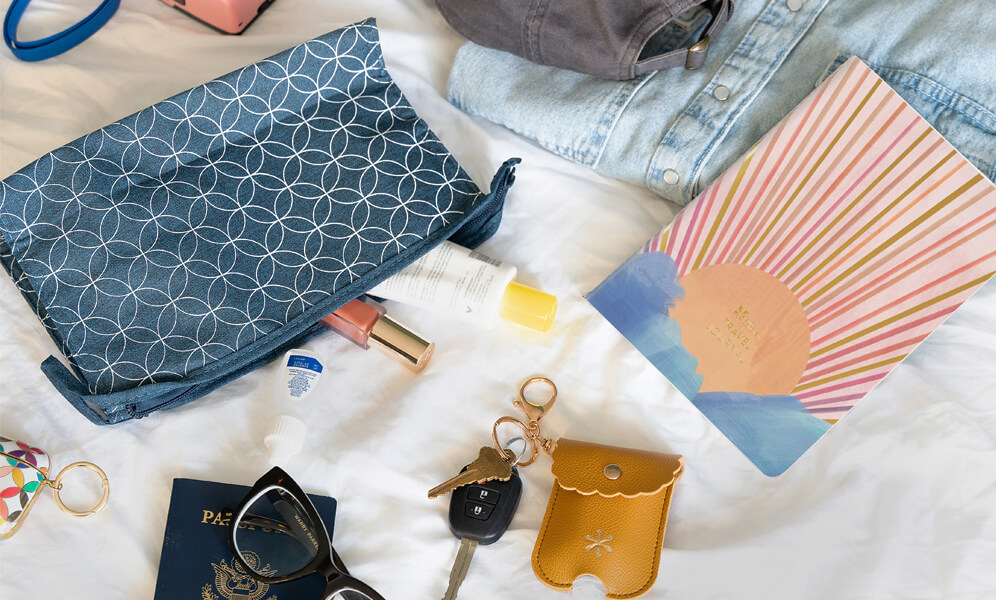
Traveling to new places and journaling about your exciting and enriching experiences is beyond rewarding. Whether you're exploring a bustling city, immersing yourself in nature's wonders, or embarking on a cultural adventure, capturing your travel experiences is a great way to preserve memories and reflect on your journey. One popular and creative way to document your travels is through a travel journal . In this article, we'll cover what a travel journal is, the benefits of keeping one, how to choose the best travel journal among different types, and provide you with tips and examples on how to make your own.
Ready to discover how to capture your travel experiences in different places, explore creative travel journal ideas and travel journal prompts, and more? Let the adventure begin!
What is a Travel Journal?
A travel journal is a personal diary that allows you to record your thoughts, feelings, and experiences during your travels. It serves as a visual and written account of your adventures, providing you with a tangible keepsake that you can cherish for years to come. Unlike a regular journal, a travel diary focuses specifically on your journeys, including details about the different places you visit, the people you meet, the food you try, and the sights you see.
Benefits of Keeping a Travel Journal
Keeping a travel journal offers numerous benefits beyond simply documenting your experiences. Here are some additional reasons why you should consider starting one:
1. Emotional and Mental Well-Being
Journaling has been shown to have positive effects on emotional and mental well-being . When you write about your travel experiences, you have the opportunity to process and reflect on your emotions, helping you gain a deeper understanding of yourself and your reactions to different situations via your journal entries. It can be a therapeutic outlet for releasing stress, anxiety, or even excitement, allowing you to better manage your emotions throughout your journey.
2. Enhanced Memory Retention
Writing about your travels helps improve memory retention. By actively engaging with your experiences and recording them in detail, you reinforce the neural connections related to those memories. This makes it easier to recall specific moments, sights, sounds, and even the feelings associated with them in the future. Your travel diary becomes a valuable tool for preserving and retrieving cherished memories.
3. Cultural Exploration and Appreciation
A travel journal encourages you to be more observant and attentive to the details of the places you visit. It prompts you to delve deeper into the local culture, traditions, and customs. By documenting your interactions with locals, sampling regional cuisine, and exploring hidden gems, you develop a greater appreciation for the unique aspects of each destination. Your journal becomes a testament to the richness and diversity of the world around you.

4. Personal Growth and Self-Reflection
Writing in a travel diary allows for introspection and personal growth. As you reflect on your experiences, you gain insights into your own values, beliefs, and perspectives. You may discover new passions or interests, challenge preconceived notions, or develop a greater sense of empathy and understanding for others. The process of self-reflection through journaling can lead to personal transformation and a deeper connection to the world.
5. Travel Planning and Preparation
Your travel journal can serve as a practical resource for future trips. By documenting your itineraries, accommodations, transportation details, and recommendations, you create a valuable reference guide that covers your experiences more fully. You can refer back to your journal to jog your memory or provide recommendations to fellow travelers. It becomes a repository of knowledge that can streamline the planning process for future adventures.
6. Connection with Loved Ones
Sharing your travel journal with friends, family, or future generations can be a meaningful way to connect and bond. Your journal becomes a storytelling tool, allowing others to experience your journey vicariously through your words, sketches, and photographs. It can spark conversations, ignite curiosity, and inspire others to embark on their own adventures.
7. Creative Expression
Engaging in the creative process of journaling stimulates your imagination and artistic abilities. Whether you're writing prose, sketching landscapes, creating collages, or experimenting with different art mediums, your travel diary becomes a canvas for self-expression. It encourages you to think outside the box, explore new artistic techniques, and develop your creative skills.
Keeping a travel journal goes beyond simply recording your experiences. It has profound benefits for your emotional well-being, memory retention, personal growth, and cultural appreciation. It serves as a tangible reminder of your adventures, a tool for planning future trips, a means of connecting with others, and a creative outlet for self-expression. So, grab a journal and embark on your journey of exploration and self-discovery through travel journaling.
Types of Travel Journals

There are different journals for just about any goal or activity you can think of – from travel journals to fitness journals , from gratitude journals to garden journals , and more. Similarly, there are various types of travel diaries to suit different preferences and styles. We cover the best travel journals below so you can find one perfect for you.
1. Guided Travel Journals
Guided journals provide travel journal prompts and structured sections to help you capture specific aspects of your journey. Guided journals often include questions, blank pages to fill in, and guided activities to guide your journaling process. Using a guided journal or planner , can ensure you cover all the essentials, without missing any crucial details you’ll want to revisit later.
2. Traditional Handwritten Journals
These are classic journals or notebooks with blank pages where you can freely write, draw, or glue mementos. Traditional journals offer the most flexibility in terms of customization for creative journal entries.
3. Photographic Travel Journals
For those who prefer visual storytelling, a photographic travel journal focuses on capturing moments through photographs. You can include pictures alongside brief descriptions or captions to narrate your journey visually.
4. Scrapbook Travel Journals
Scrapbook-style journals combine photographs, tickets, postcards, and other memorabilia with handwritten notes and decorative elements. They provide a visually appealing way to preserve your travel memories.
5. Sketchbook Travel Journals
If you have artistic inclinations, a sketchbook journal allows you to sketch and paint scenes, landmarks, and people you encounter during your travels. It's a great way to capture the essence of a place through your own artwork.
6. Digital Travel Journals
In the digital age, many people opt for digital travel journals, using apps or online platforms to document their adventures. Digital journals offer the convenience of easy editing, multimedia integration, and the ability to share your journey with others online.
7. Travel Bullet Journals
A popular trend in journaling, travel bullet journals combine organization and creativity. Based on the bullet journaling system, these journals use symbols, icons, and trackers to help you plan and record your travels. You can create sections for itineraries, packing lists, daily logs, and more, all while adding artistic touches and personalization.
You can also use a monthly planner with ample note pages and customize it as a travel calendar journal.
Whether you prefer the structure of guided journals, the freedom of traditional handwritten journals, the visual impact of photographic or scrapbook journals, the artistic expression of sketchbook journals, the convenience of digital journals, or the organization of travel bullet journals, there's a type of travel journal that will resonate with you and enhance your travel experiences. Choose the one that suits your style and embark on a journey of creativity and self-expression.
How to Make a Travel Journal
Now that you have an idea of the different types of travel journals, let's explore how to make your own.
1. Selecting the Right Journal
Consider the type of journaling experience you desire. If you prefer writing and sketching, a traditional blank-page journal or sketchbook might be ideal. If you want structure and guidance, opt for a guided travel journal. If you're tech-savvy, explore digital journaling options.
2. Gathering Essential Supplies
Depending on the type of journal you choose, gather supplies such as pens, pencils, markers, glue, scissors, washi tape, stickers, and any other decorative elements you'd like to incorporate. If you're going digital, ensure you have a suitable device and any necessary apps or software.
3. Planning Your Journal
Before your trip, plan how you want to organize your journal. Consider creating sections for different aspects like itineraries, accommodation, food, and sightseeing. This will help you stay organized and make it easier to find information later.

4. Documenting Your Journey
During your trip, actively engage in your journaling process with regular (yet not restrictive or rigid) journal entries. Write about your daily experiences, jot down interesting conversations, glue in ticket stubs or postcards, and take photographs to complement your entries. Let your creativity flow and capture the essence of each moment.
Travel Journal Page and Layout Examples

The layout and organization of your travel journal pages play a crucial role in bringing your travel experiences, from all the different places you’ve visited, to life. By incorporating various elements and sections, you can create a visually appealing and informative journal that captures the essence of your journey. From practical pages for itineraries and packing lists to creative spreads for reflections and bucket lists, here are some ideas to help you design engaging and meaningful pages for your travel diary.
1. Packing List and Pre-Trip Planning Pages
Dedicate a page or spread to jot down your packing list and pre-trip preparations. Include essential items, travel tips, and any special considerations for the destination. You can even add checkboxes or symbols to mark off items as you pack, ensuring you don't forget anything important.

You may also want to check out these helpful travel and packing tips .
2. A List of Local Words and Phrases
Learning a few basic words and phrases in the local language can greatly enhance your travel experience. Create a page dedicated to practicing and referring to these words and phrases. Include translations, pronunciation guides, and space to practice writing them. This page can be a helpful tool for connecting with locals and immersing yourself in the local culture.
3. Itinerary Pages
Design pages dedicated to your daily itineraries. Include the places you plan to visit, opening hours, transportation details, and any additional notes or reservations. You can add maps, photographs, or illustrations to make the page visually appealing and easy to navigate.
4. Accommodation and Restaurant Reviews
Reserve pages to review and rate the accommodations and restaurants you experience. Include details like the location, ambiance, service, and any standout dishes. You can even attach business cards, menus, or photographs to accompany your reviews. These pages will not only serve as a reference for future trips but also help fellow travelers discover hidden gems.
5. Post-Trip Reflection and Wrap-Up
Allocate space in your journal for post-trip reflections. Create pages to summarize your overall experience, highlight your favorite moments, and reflect on the lessons learned during your journey. Include photographs, sketches, or quotes that capture the essence of your adventure. These reflection pages will serve as a reminder of the growth and memories you gained from your travels.
6. Travel Bucket List
Create a dedicated page to list destinations, landmarks, or experiences you aspire to visit or accomplish in the future. You can divide the page into different categories like countries, UNESCO World Heritage Sites, or adrenaline-fueled activities. This page will serve as a source of inspiration and motivation for your future travels.
7. Travel Budget, Savings Goals, and Tracking
If budgeting is important to you, design pages to track your travel expenses, savings goals, and tips for saving money during your travels. Create tables or graphs to visually represent your budget and savings progress. These pages will help you stay accountable and ensure you're making the most of your financial resources.
Your travel diary is a personal and creative space to capture the memories, emotions, and experiences of your journeys. Through carefully designed pages and layouts, you can transform your journal into a visual and written narrative of your adventures. Whether you choose to incorporate practical elements like itineraries and packing lists or focus on creative expressions like reflections and bucket lists, the possibilities are endless. Let your imagination guide you as you create pages that reflect your unique travel style and personality. With each turn of the page, your travel diary will become a treasure trove of cherished memories and a gateway to relive your journeys again and again.
Creative Travel Journaling Ideas and Prompts

Stuck on what to write or include in your travel diary? Here are some creative travel journal ideas and travel journal prompts to get you started:
- Write a letter to your future self reflecting on your travel experiences and what you hope to remember.
- Describe the scents, sounds, and tastes that stand out in each place you visit.
- Create a "People You Meet" page, where you can jot down brief descriptions or draw portraits of interesting individuals you encounter during your journey.
- Write a short story or poem inspired by a specific location or experience.
- Make a to-do list of activities or experiences you want to accomplish at each destination. Challenge yourself to complete as many as possible and check them off as you go.
- Write a gratitude list, noting the things you're grateful for during your travels. It could be the stunning sunsets, the kindness of locals, or the serendipitous encounters.
A travel diary is a beautiful way to document and cherish your travel experiences. Whether you opt for a traditional handwritten journal, a photographic account, or a digital platform, the process of journaling will enhance your journey and provide a lasting memory of your adventures. Experiment with different styles, layouts, and prompts to make your travel journal uniquely yours. So, grab a journal and start capturing your travel memories today!
Join the Conversation
Newsletter signup, shop now. pay in 4. always interest-free..
Add your favorites to bag
Select Afterpay at Checkout
Log into or create your Afterpay account, instant approval decision
Your purchase will be split into 4 payments, payable every 2 weeks
You must be over 18, a resident of the U.S. and meet additional eligibility criteria to qualify. Late fees may apply. Estimated payment amounts shown on product pages exclude taxes and shipping charges, which are added at checkout. Click here for complete terms. Loans to California residents made or arranged pursuant to a California Finance Lenders Law license. © 2020 Afterpay
Pay in 4 interest-free payments
No impact on credit score and no late fees. Available for purchases of $30 to $1,500.
- Choose PayPal at checkout to pay later with Pay in 4 .
- Complete your purchase with a 25% down payment.
- Use autopay for the rest of your payments. It's easy!
Pay in 4 is available to consumers upon approval for purchases of $30 to $1,500. Pay in 4 is currently not available to residents of MO or NVMissouri or Nevada. Offer availability depends on the merchant and also may not be available for certain recurring, subscription services. When applying, a soft credit check may be needed, but will not affect your credit score. You must be 18 years old or older to apply. PayPal, Inc.: Loans to CACalifornia residents are made or arranged pursuant to a CACalifornia Financing Law License. GAGeorgia Installment Lender Licensee, NMLS #910457. RIRhode Island Small Loan Lender Licensee. NMNew Mexico residents:
Find more disclosures related to Pay in 4.
Lyn Hughes | 07 November 2018
How to write the perfect travel journal.
Want to record the thrills and spills of your adventures? Here's how to write an evocative and captivating travel diary...
1. Ask yourself... who is the diary for?
Is it just for you to read – or to share with your friends? This could influence what you put in or leave out! It will also influence the tone and style of the way you write. If you're keen to write for a wider audience, how about creating a travel blog ?
2. Ask yourself... What do you want to include?
When writing your notes, think about what you’ll want to remember from the trip in ten, 20, or even 30 years.
It'd be a good idea to include your itinerary; your route plotted on a map, plus a ‘cast list’ of people you meet en route (include brief descriptions or even photos to jog your memory). Keep the contact details of the people you would like to keep in touch with (and do keep in touch with them!). You could list the ‘top moments’ or ‘best bits’ from your trip – best sunset, view, meal, restaurant...
3. Avoid listing mundane activities
'And then I did this... and then I did that’... It can become tedious! You want to create a captivating story, not a repetitive list. Indeed, this is one of the big no-nos of travel writing !
4. Remember entries don’t have to be chronological
Write whatever catches your imagination, whenever it occurs to you.

5. You don’t have to record everything!
What you leave out is as important as what you put in.
6. Use dialogue
Funny things you’ve overheard, or a conversation with a camel driver, for example.
7. Use ALL your senses
Write about the sounds, smells, tastes and even textures of your trip.
8. Illustrate it
The act of drawing a building, termite mound or person will help to etch them in your memory. If you're not artistic, how about learning how to get the best results from your camera or how to take great iPhone photos instead?
9. Use it as a scrapbook, too
Stick in tickets, bottle labels, snippets from local newspapers, receipts, etc – use the pocket in the back of the journal to hold them, or stick them in next to the day they refer to. You'll have a thick, full memory book to look back through.

10. Give a day and date for each new memory...
Or else you’ll forget what happened when.
11. Get it down on paper while it’s fresh
It will be much more vivid. If there’s not enough time for a full description, jot down a few key words, which will jog your memory and fill in the gaps later.
12. It’s your journal, so stick to what interests YOU
If you want to record distance in miles covered, units of wine drunk, funny road signs, tacky souvenirs, or even cute cats, then great – that’s up to you!
13. Enjoy yourself!
Your travels and trips are fun – and your journal should be too! If it's becoming a chore, think how you can change it to make writing more enjoyable... How about summarising each day with one sentence, a best of/worst of list, or replacing words with pictures or photos?
Further tips on travel writing:
5 biggest mistakes made by novice travel writers how to become a travel writer 10 tips for writing inspiring travel articles, related articles, looking for inspiration.
Join our newsletter
Get the very best of Wanderlust by signing up to our newsletters, full of travel inspiration, fun quizzes, exciting competitions and exclusive offers.
Travel Journal: Ideas, Tips, and How To Write a Travel Diary
- Travel Journal
Traveling has the potential to be wildly fulfilling. It exposes you to new cultures, different perspectives and unique experiences. The further you travel the more you are pushed out of your comfort zone. And the more you are pushed out of your comfort zone, the more you learn about yourself and the world around you.
One of the most popular types of journals is a travel journal. By having a travel diary, you can keep all these new experiences and knowledge in one place where you can reflect on them.
What is a travel journal?
Travel journals are a place where you can write about trips you have taken, what you learned during and the experiences you had. It is a collection of adventures, stories, memories and discovery. It doesn’t matter where you're going or who you’re traveling with, an online trip journal can come anywhere.
Why Write A Journal When Traveling?
There are many benefits of keeping a journal when traveling, but here are a few to start with:
Remember More
By writing down the things you want to do on your trip and the things you have done during it, you won’t forget the reasons you wanted to go and will remember more of your visit.
When traveling somewhere new, you will learn a lot about that place’s culture, customs and people. By having a place to write down your observations, you will absorb more of your surroundings.
Reflect More
A journal is a place to record new things you have discovered while exploring various places you visit. By having all these new findings in one place, you will be able to look back and reflect on what you have learned and apply it to other parts of your life.
How To Write Travel Journals: 5 Tips To Get The Most Out Of Your Journaling
You don’t need to be traveling to Timbuktu to write a travel diary. Your writing can start with a family vacation or a weekend getaway. All you need is a destination and your holiday journal can begin!
1. Use your journal to plan your trip
Your trip journal can begin before your trip has even started. Use your journal to start planning the things you want to do. It can be anything from a cool restaurant you want to eat at, a hike you want to go on or different sights you want to see. Write down whatever is on your trip check-list, so you don’t forget it.
Once you know what you want to do, do some research and figure out the best way to do it. If you want to go see a special monument, figure out the best way to get there and put it in your journal. If you want to do some cool activities, write down the contact information of the people, places or tours that facilitate them. Your journal is also a great place to keep the contact information of your accommodations and transportation.
2. Write about what you imagine it will be like
Sometimes when you travel, your destination is wildly different than what you expected. Maybe you expected the local food to be bad and it turned out to be delicious. Maybe you imagined the town to be smaller than it actually is. Maybe you thought you would be more comfortable with the language. Whatever it is, think about writing it down before you arrive. It will be interesting to compare these predictions to what you actually experienced.
3. Write during your trip
It is always easier to remember things when they are fresh in your brain, so try and write as much as you can while traveling; every day if you can. Your journal entries don’t have to be long, but let them highlight what you feel was most important or exciting. How did you feel during your visit to the local market? What did you smell, taste and hear? Did you learn something new from the person you spoke to at the bar? Were you surprised by the clothes people were wearing? What was the view from the top of the mountain like? Before you go to bed, try and recall what you did that day, what you thought and how you felt. This will serve as a great way to remember more from your trip, but will also help you reflect and grow from what you encountered.
4. Add pictures to your journal
Even though your journal is meant for writing, pictures are still worth a thousand words. Combining pictures with your first-hand accounts of what they represent, or what happened when they were taken, will make for an even more comprehensive narrative of your travels. Don’t worry about glueing or taping anything either. Penzu allows you to upload pictures straight into your online travel journal, so you can keep your pictures and words connected and organized.
5. Write about your trip after you leave
Since you write about your trip before you arrive, you should also write about it after you leave.
- What was it like?
- What did you learn?
- What surprised you?
- What disappointed you?
It is important to reflect on your travels, so you can retain new understandings and apply them to future adventures. This is also a great way to learn about yourself, other people you may have travelled with and how you can grow. Step back from all the things you did and try to see the big picture. It may surprise you.
10 Travel Journal Ideas To Inspire You
The blank pages of your travel journal may not be serving as great inspiration, but your new trip should! Here are 10 travel journal ideas to get those creative juices flowing, kick-start your writing and help you get the most out of your travels. We hope these journal prompts help!
1. Why are you going?
Not every trip needs an explanation and not every vacation needs a justification. People travel for all sorts of different reasons or for no reason at all, but if your travel has purpose, write about it. Even if you’re traveling for the sake of it, that is a reason worth talking about too.
2. Write about your expectations.
As we mentioned above, expectations can wildly differ from reality, especially when going somewhere you’ve never been or going with someone you have never travelled with before. Jot down what you think the trip will be like, or hope it will be like.
3. What are you going to do?
Write about the things you want to do, the sights you want to see, the music you want to dance to, the food you want to taste. Writing it all down will get you excited and help you not to forget.
4. Write about the people.
Did you meet anyone new? Did you make a new friend? Were the locals welcoming? Did you learn something new from a stranger? Did you learn something new from a friend? People can really make a trip. Whether you came with them, or met them there, write about how the people you encountered affected your experience.
5. Write about the food.
Just because you call it your travel diary, doesn’t mean it can’t double as a food diary . If there are any foods you loved, dishes you hated or recipes you can’t live without, write them down to remember them all. Maybe some new fare you tried will influence your tastes when you return home.
6. The ups and the downs.
What did you like most about the trip? What did you like the least?
7. Write about yourself.
Reflect on the new experiences you had, what made you uncomfortable and what enticed you. Did you learn anything new about yourself on the trip? Did being somewhere else expose something you hadn’t seen in yourself before? Traveling can help people grow. Think about your journey and if it helped you grow in any way.
8. Write a travel guide.
If you knew friends were going to the same place, what would you tell them to do? Write down your recommendations and the stuff that should not be missed.
9. What would you have changed?
Is there anything about the trip you would have changed? Is there anything else you wish you did? Anything you wish you didn’t do? Write about your travels and how you can improve them for the next time you go away.
10. Where do you want to go next?
We all have a wish-list of places we want to go. Write yours down and try to start checking them off.
Using Penzu for Your Travel Journal
Penzu’s journal software allows you to access your journal from any computer, smartphone or tablet. Penzu will be your travel journal app ; all you need is your mobile phone or tablet and can write in in it, with or without wifi. You never have to miss an entry or forget a moment, as Penzu can come with you around the world. No internet necessary.
Now that you know what to write in a travel diary and how to write one, all you need to decide is where to go. Pick a place get start your online journal today!
There's no time like the present - start your free online journal today!

Loved by millions!
Get access to your diary wherever you are – download the free Penzu app for your all of your iOS and Android devices today!

Related Articles
Best Travel Journal App
Journal Basics
What is a Journal?
Journal Entries
Benefits of Journaling
Journal Types
How To Start and Write a Journal
- Journal Examples
- Journal Prompts
Ideas for Journals
- Pregnancy Journal
A pregnancy journal helps you remember important information about your health and make better decisions while you're expecting.
5 Year Journal
A five year journal can help you remember the people and events that matter to you.
Prayer Journal
Deepen your relationship with God by writing down your prayers every day. Learn by reflecting on prayers that have been answered, and others that haven’t.
How To Create a Reflective Journal
A reflective journal is the perfect place to jot down some of life's biggest thoughts.
- Bible Journal
Bible journals can provide you with a therapeutic way to better cope with everyday situations, understand your feelings and establish a connection between your life and the biblical content.
- Free Signup
- What is a Journal
- Reflective Journal
- Dream Journal
- Five Year Journal
- Secret Diary
- Electronic Diary
- Diary Templates
- Wedding Diary
- School Diary
- Health Diary
Copyright Penzu Inc. 2024
FREE shipping on all Greek orders, with BOXNOW!!
FREE shipping on all German orders above 60€!
Item added to your cart
An introduction to the tour diary.

Hey, ho! Let's go! So, what is this Tour Diary thing? I'll try to keep it sort. When I started brainstorming about what I'd want Out of Medium to be, I always envisioned a collective of people, sharing thoughts, ideas, art. Creating merchandise and, as our friends at OneTwoSix Clothing say, MEMORIES. Ιt's a fundamental part of life to share knowledge, stories, memories, drinking a couple of beers and reminiscing the old days. This is what the Tour Diary is about. We reach out to people to have them write a story down, and share it with all of you. A funny story from a tour. A memorable meeting at the backstage of a festival. An "I-definitely-cant-and-never-forget-that-day" story. Who will those people be? People you've seen on and off stage at an underground live show. Musicians, technicians, roadies, promoters, you name it. It might even be you! ;) You think you got a cool story? We are all ears! Send us a message at [email protected] and we'll take it from there. Sit back, crack a cold one and enjoy. -Stef Photo by Matassos Photography at Fuzztastic Planet Festival , 2014
Leave a comment
Please note, comments need to be approved before they are published.
- Choosing a selection results in a full page refresh.
- Opens in a new window.
You're visiting us from %country%, redirect to %redirect_store%?
- PRO Courses Guides New Tech Help Pro Expert Videos About wikiHow Pro Upgrade Sign In
- EDIT Edit this Article
- EXPLORE Tech Help Pro About Us Random Article Quizzes Request a New Article Community Dashboard This Or That Game Popular Categories Arts and Entertainment Artwork Books Movies Computers and Electronics Computers Phone Skills Technology Hacks Health Men's Health Mental Health Women's Health Relationships Dating Love Relationship Issues Hobbies and Crafts Crafts Drawing Games Education & Communication Communication Skills Personal Development Studying Personal Care and Style Fashion Hair Care Personal Hygiene Youth Personal Care School Stuff Dating All Categories Arts and Entertainment Finance and Business Home and Garden Relationship Quizzes Cars & Other Vehicles Food and Entertaining Personal Care and Style Sports and Fitness Computers and Electronics Health Pets and Animals Travel Education & Communication Hobbies and Crafts Philosophy and Religion Work World Family Life Holidays and Traditions Relationships Youth
- Browse Articles
- Learn Something New
- Quizzes Hot
- This Or That Game
- Train Your Brain
- Explore More
- Support wikiHow
- About wikiHow
- Log in / Sign up
- Education and Communications
- Journal Writing
How to Make a Travel Journal
Last Updated: February 24, 2023 Approved
This article was co-authored by Archana Ramamoorthy, MS . Archana Ramamoorthy is the Chief Technology Officer, North America at Workday. In 2019, she went on a three-month sabbatical from her work and solo traveled throughout Southeast Asia. She is a product ninja, security advocate, and on a quest to enable more inclusion in the tech industry. Archana received her BS from SRM University and MS from Duke University and has been working in product management for over 8 years. There are 8 references cited in this article, which can be found at the bottom of the page. wikiHow marks an article as reader-approved once it receives enough positive feedback. In this case, 83% of readers who voted found the article helpful, earning it our reader-approved status. This article has been viewed 139,007 times.
Travel is a time for growth, new experiences, and seeing more of the world. If you're taking a trip, you want to remember everything that you did for years to come. Keeping a travel journal will not only help preserve your memories of the experience, but can help enrich your trip in the moment as well. Check out this super useful list we’ve put together about travel journaling! We’ll start off with some tips on what to put in your travel journal, how to write entries, how to pick a journal type, and more.
Travel Journal Entry Template

Write about more than just activities to make entries interesting.

- For example, instead of just talking about a hike you went on, describe the meal you ate at the end of the day and how good it was after exerting yourself physically all day long.
Engage all senses to transport the reader to the time and place.

- For example, describe the scent of the flowers on the table in the cafe where you have lunch or the feel of the breeze when you're relaxing on the beach.
Find a theme for entries to help make them feel coherent.

- If you're having trouble identifying a theme for an entry, start by asking yourself a few basic questions, such as: “What made me smile today?”, “What surprised me today?”, or "What did I learn today?" Write down the answers, and you may see a theme start to emerge.
Write about people you meet to bring their characters to life.

- For example, you could describe how the old lady who sold you fresh produce at the market looked and acted to bring life into the story about your trip to the market that day. Or, you could talk about fellow travelers you’ve been hanging out with and what you like or admire about them.
Collect mementos to add visual interest to your journal.

- You don't necessarily have to glue or tape the mementos in your journal as you're traveling. Just set them aside in your folder, so you can add them when you return home. However, make sure to leave space among your written entries to add the materials that match up with them.
- If you’re making a digital journal, you can easily scan or take photos of mementos to add to it.
Take photos to bring your journal entries to life.

- If you’re journaling online, such as on a blog, upload a few relevant photos to go with each post and help bring your entry to life.
- You don’t have to print out photos on the road for a physical journal. Just save the ones you like and print and add them to your journal when you get home.
Add some sketches if you like to draw.

- It doesn't matter if you're not a great artist. You can sketch a simple map of the neighborhood that you're staying in or a pretty bunch of flowers that you saw. As long as the drawing helps you remember details of your trip later, it's worth it.
- You could even use watercolors or another type of paint to do some artwork on a separate piece of art paper, then put it in your journal once it’s dry.
- If you’re making a digital journal, you can use a drawing app on a tablet or smartphone to do sketches for it.
Make a physical journal if you’re a hands-on type person.

- A journal with acid-free paper is usually a good investment because it will ensure that your writing and sketches will hold up for years.
- If you want to get really decorative, purchase some additional art supplies like colored markers, gel pens, and pencils.
- Washi tape or a glue stick are handy for sticking postcards, pictures, and other mementos to pages.
- If you like to draw and sketch, take a set of drawing pencils with you to sketch sights you see along the way.
- A small pair of craft scissors can also be handy for cutting out images and things to stick in your journal. However, if you’re flying, make sure you can put them in a checked bag or you won’t be able to bring them with you.
Create a digital journal if you want to easily share it.

- Another advantage of digital journals is that you don’t have to bring much with you. You can use a laptop, a tablet, or even just a smartphone!
- If you want to find different apps for journaling, search wherever you get your apps from with a term like “travel diary” or “journal app.”
- Remember that there’s no right or wrong way to create a journal. Whatever gets your creative juices flowing and helps you cherish those memories forever is perfect!
Get a clear, expandable folder to collect journaling materials in.

- A folder is especially important if you don't want to compile your whole journal while you're actually traveling. You can just write in the journal as you go, and add the mementos after you've returned home because the folder will keep them all organized.
Use a map to track your travels if you’re going many places.

- If you want to find apps to track your travels on a map, just type “travel map app” into the search bar of wherever you get your apps.
- You don’t have to be travelling internationally to track your route on a map. For example, if you’re doing a cross-state road trip, you could print out a map of each state and mark your stops along your route in each state.
- You can also use a large world map to track multiple trips over the months and years to come.
Decide who you're writing for to help guide your journaling.

- If you plan to share your journal with others, consider the details that you plan to include. You may not think it's necessary to write down the address of a restaurant that you enjoyed to preserve the memory, but a friend may find the information helpful. On the other hand, there may be personal details of your trip that you don't want to share with family and friends, so it's best to omit them.
Start journaling before your trip to help plan and get excited.

- You could write about what you imagine certain places to be like, then go back and compare notes after you actually visit them for a fun comparison!
- You can put practical details in the beginning of your journal too, such as contact info for tour operators or directions to get to certain places.
Make entries as often as possible to fill your journal as you travel.

- It helps to set aside a specific time to write in your journal. For example, you might do your entries at breakfast or just before bed. If you're taking a plane, train, bus, or car to another location, the ride is a great time to work on journal entries.
- Remember to date each entry, so you can remember the timeline of your trip. You may want to include the time that you wrote each as well.
- If you're in a hurry, jot down notes about your day on a scrap of paper that you can copy into the journal when you have more time. You may forget some details if you don't write things down as you go, so a rough draft can come in handy.
Expert Q&A

You Might Also Like

- ↑ https://www.nathab.com/blog/create-a-travel-journal-that-youll-read-again-and-again/
- ↑ http://www.wanderlust.co.uk/magazine/articles/advice/how-to-write-the-perfect-travel-journal
- ↑ http://solotravelerblog.com/9-tips-for-those-who-struggle-to-keep-a-travel-journal/
- ↑ http://www.globejotting.com/create-a-more-vivid-travel-journal/
- ↑ http://www.fodors.com/travel-photography/article-creating-a-travel-journal-84/
- ↑ http://www.gonomad.com/2288-tips-on-keeping-a-travel-journal
- ↑ https://www.windstarcruises.com/blog/how-to-make-a-travel-journal/
- ↑ https://penzu.com/travel-journal-guide
About This Article

To make a travel journal, write entries in a journal as you're traveling so you don't forget any important details. Try to engage all of your senses as you're writing by describing how your destination smells, sounds, looks, feels, and tastes, which will make your journal entries more vivid and interesting. Remember to take photos and collect mementos throughout your trip so you can glue them into your travel journal later on. You can also draw or paint different sights you see and include your own artwork in your journal. To learn how to get all the necessary supplies for a travel journal, keep reading! Did this summary help you? Yes No
- Send fan mail to authors
Reader Success Stories
Christine Adams
Apr 11, 2017
Did this article help you?
Joseph Gray
Jun 6, 2016
Namratha Sreedhar
Jul 13, 2016
Jun 16, 2017
Kabir Thappar
Dec 9, 2016

Featured Articles

Trending Articles

Watch Articles

- Terms of Use
- Privacy Policy
- Do Not Sell or Share My Info
- Not Selling Info
wikiHow Tech Help Pro:
Develop the tech skills you need for work and life

Travel journal examples and how to get the most out of a travel journal
A travel journal: your new best friend.
Travel journal examples can spark ideas for your own journal. This matters a great deal because a travel journal can be one of your most helpful travel — make that life — tools. It can serve myriad purposes from recording your thoughts, emotions (an important aspect many overlook) and experiences to being a repository of creative ideas and even artwork. You can use it as a scrapbook, planning tool, contact book, organizer, reference book (for vital information such as passport numbers, hotel addresses, places to visit, etc.) and even a place to hide certain valuables.
It’s simple enough to put information into your travel journal. The hard part is being able to find or extract that information easily later on. But don’t worry. I’ll show you travel journal examples, techniques, hacks and tips for that and more based on decades trying a wide variety of travel journals and approaches. You’ll find these useful whether you’re an old pro at journaling or even if you’ve never used a travel journal before. And be sure to read all the way through this article since the Additional Resources section at the end is loaded with inspiring and helpful travel journal examples and ideas.
Getting started
The first and most important thing to remember is that there is no one right way to set up your travel journal. In fact, I’ve found that the best approach is to just start with something and learn as you go. My first travel journal was basically a daily diary: “Today I did this, etc.” Now, however, I use it in a very different matter. But it all comes down to this: What is the purpose of your travel journal?

Two typical entries from my first travel journal on my first trip to Europe in high school. I have upped my travel journal game a bit since then, or so I hope.
This is such an important question because it will guide what kind of notebook/journal/sketchbook you use, how you organize it and how you interact with it. If you’re just starting out, you may not even know your purpose other than to record your experiences. That’s fine. Start there. Then refine over time.
For me, I see my travel journal as a collection tool for travel drawing and notes where I gather ideas, sketches, some to-do’s, trip details and anything else that interests me. But the main difference between this and most journals is that as a tool, I want to use my journal after I return. Not just for nostalgic reminisces on my trip, but to glean from it what I’ve learned, gained and become. I’ll explain this more momentarily.
Picking the right journal
Again, I’m not sure there is a universal “right” travel journal. Your goal is to find what works for you. You can start by determining if you want a blank notebook or a travel journal that comes with prompts, quotes, organizing categories, etc. Here’s a helpful list of 17 travel journals to give you a sense of travel journal examples and possibilities. Mostly, consider if you want to do travel drawing or even painting in your travel journal. If so, you’ll want thicker paper that won’t warp with the water or bleed through with ink. You likely will want blank pages, as opposed to lines, grids or dots.

Just as there’s no right or wrong size (just what works for you), so too is the orientation up to you. As you can see here, I sketched holding the journal in a portrait orientation (left page) but wrote (right page, partial) using a landscape orientation. Both work.
If you want to use it as a form of a scrapbook, get one with pockets or that is expandable enough for when you’ve doubled the thickness with all those tickets, stamps, samples of currency, bottle labels and other elements you’ve glued to the pages.
Buying a nice looking or feeling notebook or journal can be motivating. But getting too nice of a notebook to use can be intimidating: You’ll be afraid to do any travel drawing or mess it up. Thus, I suggest starting somewhere in the middle. Find a journal or notebook that will hold up well (hard covers help in this regard), but isn’t so expensive you’ll only want to use it on special occasions.

Even fancy patterns on your pages can be fun. I tend to prefer blank pages, but sometimes I’ll try different patterns just to mix things up.
Your travel journal is more of a workhorse than a show pony (though sometimes a bit of that too later on). You’ll get far more out of one you use all the time, where you write, do travel drawing or urban sketching, doodle and record with the intent that only you will ever see it. If you choose to show it to others later, fine. But don’t make that your main goal, at least as a beginner, or you’ll never get the most out of your journal.
How will you use your travel journal?
Back to purpose, you can choose to have a general-use journal or one devoted only to your trips (or to a particular trip). I have done both, and there are pros and cons to each. A journal for all situations allows you to connect everything you do so that if a great work idea hits you on a trip, you can reference back to a meeting about that, etc. You can also find things easier in some ways since your whole life, trip or home/work, is laid out in a chronological fashion in one book.

Here’s a recent journal of mine that I use daily, as well as for trips. You can see the basic outline for this article here that I wrote on the plane on a business trip. How do I know it was on a trip? From the notation that the sketch was done from a photo in the airplane’s magazine somewhere between Baltimore (BWI) and Seattle (SEA)
A really popular approach these days to general journals is the Bullet Journal . Many people swear by this way of organizing their journal and their life. I love many of the ideas found in bullet journaling. But I choose not to follow that approach completely. Why? Bullet journaling is primarily intended as a productivity tool. I personally don’t find it helpful in that regard because, for example, tracking all my calendar events and moment-by-moment to-do’s in a journal slows me down.
Combine digital and analog
Instead, I use a combination of Outlook, Trello , Evernote and Scrivener (the latter two for organizing ideas and writing projects or content) on my phone and computer. The main reason for tracking tasks digitally is that they roll over automatically. I don’t have to constantly move them manually from one day, week or month to-do list to the next.
But the main reason I don’t use the bullet journal methodology for my travel journal is that when I travel, productivity is not my goal. Exploration and discovery are. I use my travel journal to capture what I learn as I explore the world around me and the world within me wherever I go.

On a trip, I’m less interested in productivity than in explaining why this sketch was hard to do well.
In the last few years, I’ve taken up sketching and even watercolors, so for me, I now maintain a separate travel journal for each major trip. I use one that has thicker watercolor paper, so on a three-week trip, I can pretty much fill up the whole book. But for shorter trips, I do use my day-to-day journal. And I’ve even done both: Used my day-to-day journal to record words and a smaller sketchbook for travel drawing or watercolors. Again, no right or wrong way to do this. Just start with an approach and build from there.
Organizing your travel journal
What follows is how I organize my travel journal. It’s the same way I do my day-to-day journal but with some additional pages in the end for travel-specific information. My purpose, remember, is to capture ideas, information and experiences and then to be able to use these later. For that reason, the most helpful part of my journal is the index. I’ll explain that in a moment along with travel journal examples, but here’s what else goes into my journal.
Starting with a brand new empty journal
The first thing I do with a new journal is to put my name, cell phone number and email address on the inside cover.
Next, if the journal doesn’t have a rear pocket, I make one or glue/tape in a small envelope that fits on the inside of the rear cover.
If you glue in your own, consider hiding a few large denomination bills, both dollars and the local currency, behind the envelope or anything else you tape or glue inside the covers. It’s a great place for hiding back-up money. It works because once you start using your travel journal regularly, you’ll find it is one of your most precious possessions. You’ll learn to guard it like your wallet, passport or phone.

These are just some of the many travel journals I’ve filled up over the years.
In addition to the pocket or envelope in your journal, consider bringing a quart or gallon-sized zip lock bag to hold all the small items you pick up along the way. I used to shove them into pockets in my carry-on bag, but having a single location now keeps them from getting lost or mangled. And it keeps my travel journal from looking like George Costanza’s wallet on Seinfeld . This same bag can hold a glue stick, paper clips or anything else you want for adding items to your journal.
Start in the front and work back
I track everything chronologically noting the date at the top of each day’s entry. If it spans multiple pages, I’ll write “(cont.)” after the date on later spreads so I know to keep looking for the start of that day when I review the entry later.
I work in this chronological fashion for recording most of my entries because I find it flows better to write the item down right away and then figure out how to classify it later. I set up indexes in the back for classifying and locating the entry. But that comes as a review step, not a creative or collecting function.
What to write
Starting at the front section of the travel journal, I may use the very first page as a title page if the journal is devoted to a single trip. Otherwise, I skip over that page and then start with the date of the start of the trip and then just keep going from there. Here are the types of content I write/draw along with some of my travel journal examples:

Sometimes, I’ll devote a whole page or spread to nothing but sketches.
- General thoughts . These make up the majority of my journal and are what you’d expect in any journal.
- Sketches . I’m still just a beginner, but I’ve committed to one sketch per day, at home or on a trip. Sometimes they are involved. Others (most of the time), are just a quick gesture. But the discipline helps improve my skill.
- A daily log . At the end of each day, I do a very quick list of summary activities, where I went, who I met, what I did. I actually note it like this: “(Log 11/27/19 – Wed.):” so that I can see at a glance what were log entries versus other ideas. For logs, the shorter the better. Here’s where bullet journal techniques can help: Record a few words as a bullet rather than full sentences. At the end of every daily log, I also record two specific items in addition log entries themselves, gratitude points and what I’ve read or watched.
- Gratitude points : I jot down what I call a Goodness Journal (abbreviated as GJ) entry. This is the highlight of my day for which I am most grateful. On trips, this can often end up being multiple points.
- Read/Watched : The second additional component is what I call Read/Watched (R/W) where I list any books I’ve read that day or any movies, programs, concerts, etc. that I watched. It can include podcasts and anything else you want to track. Before I started doing this, I’d get to the end of the year and couldn’t recall all the books I’d read. Now I can just by referring back to these entries.
- Insights and Ideas . Most of my journal at home is filled with these. On trips, these happen more on plane, train or bus rides than every single day. But they could happen any time which is why I keep a pocket-sized travel journal with me or at least a note card or my phone so I can write the idea down immediately.
- Quotes . These can be formal written ones I encounter or snippets of conversations I overhear. As a writer, I want to always be gathering dialog examples or clever turns of phrases.
- To-dos. Yes, I said I record these digitally for the daily tasks. But sometimes on trips, you have opportunities for dreaming and planning. I mark all to-do’s with a checkbox I can fill in later. I like the bullet journal way they do this as well (a dot instead of a box).

I had a gentleman in China demonstrate his woodblock stamps by stamping some examples in my journal. You can paste in stamps, tickets, receipts, postcards or any other artifacts from your trip onto your journal pages as you go (if you remember to bring some glue or paste).
- Descriptions . These are either quick notes on what I’m seeing, hearing, tasting or tasting, or longer ways to capture the details of a place. See Look Closely for details on how to do this as a way to learn to see details better or to write better based on your travels. I also make sure to write down the names of places, people, food, local expressions and anything else I want to write about later. Don’t assume you’ll remember it or can look it up later. Write it down.
- Miscellaneous . I’ve had artists draw in my journal, had people stamp it (see photo above), record different colors of beverages spilled or intentionally dripped on it and a wealth of other things added. Be open to how you can use your journal. Or for fun, try this exercise: Come up with as many ways as you can think of to use your travel journal on your next trip.
The back of the journal
The front of the journal is used for a chronological input of information each day (or whenever you choose). The goal there is to record the idea, insight, drawing or information just like in a diary. The back of the journal is where you’ll organize it all for later retrieval.
Working from the last page backwards, I set up a series of index or topic pages (see the list below) where I record anything related to that topic either verbatim (if I have the time and forethought to write it down there such as contact info or a quote I came across) or as a page number reference and summary line from the front of the journal (hence the reason these back-of-the-journal pages are called Index Pages).
For me, I find that most index sections only require one page (e.g. for Contacts or Travel Details) but I leave two pages for Ideas or Vocabulary since they tend to have more entries. I write small (some would say ridiculously small), so if you don’t, you may want to leave more room.
Review your entries and record them for easier retrieval
I don’t assign page numbers as I write in the front of the journal. Instead, I jot down a page number later, maybe daily, maybe weekly, as I review my journal. Writing down the page number during the review phase shows me which pages have been indexed. No page number indicates it still needs to be indexed. As I review each page, I also code the entries themselves on the journal pages by highlighting the topic or assigning a word or letter to let me know what it is. For example, if there’s a quote, I will write “Quote” and circle it right before the quote. For blog ideas, I’ll write “blog” and circle that, etc. If an idea that has distinct merit, I’ll draw a star next to it. Particular project ideas get a corresponding code, e.g. if it’s about my book on Hidden Travel, I’ll write “HT” and circle that. The whole point is to make it easier to spot the entry when you’re reviewing the page later.

Here you can (hopefully) see how I’ve written and circled page numbers at the top and put a box around the word “Quote” on the left page and “Visual appeal article” on the right page. Then, on the Quotes index page, I’ll write “108” and circle it with a quick notation like, “E.B. White on saving/savoring the world.” On the Ideas index page, I’ll write “109” and circle it with the notation, “Visual Appeal article questions.”
In case you’re wondering why the index/topic pages go in the back and not in the front like a table of contents, it’s because I often add topics as I progress through the journal. Working from the back gives me room to add new pages whereas if I’d started from the front and I didn’t guess correctly, I’d be out of room before running into my journal entries.
Travel journal examples of Pre-Trip Items
Some of my index/topic pages get filled in (or at least started) before my trip either as planning or to load my travel journal with important information to have on my trip. Here are some travel journal examples of the key sections.

Here’s a travel journal example of a shot list from my China trip journal. I tend to write pretty small in the back section of a journal! The whited out area was my passport number in code. Writing key information on pages with other entries makes it even less obvious this is something valuable.
- Vocabulary. On trips to countries where I’m learning the language, I’ll add new vocabulary words here usually starting long before the trip. These are key words to practice, as well as new ones I pick up as I travel.
- Shot list . When planning my trip, as a photographer, I make a list of specific places, scenes, techniques I want to try or even times of day I want to shoot. Check out my Beginner’s Guide to Making Awesome Travel Photos for more on this and other travel photo techniques. In addition, as I review guidebooks or articles, I’ll add interesting places to this list. Even if you’re not a photographer, you can make a list of “must see” places or “must do” experiences or activities. Writing them down really helps because it makes it so easy to find all these in one place rather than hunting through a guidebook or other pages on your trip.
- Themes and Moments . This is yet another pre-trip fill-in page. I try to come up with a theme or quest for each trip. Writing down ideas about that or defining it really adds to the anticipation of the trip. On this page, I’ll also jot down ideas for creating magic or defining moments for others on the trip. This includes ideas for the activities or contact info for places or people that will be part of the activity.
Travel journal examples of elements to add as you travel
Here are some typical index/topic pages in the back of my travel journal that get filled in as I go:
- Contact information . I keep a separate page to record the names, email addresses, etc. of people I meet along the way. If, in a hurry, I just write down a name and email address in the front-of-the-book journaling section. I’ll later record the page number and contact name on the page here so all I can find all my contacts in one place later.
- Ideas . This becomes a catchall for any creative ideas I’ve had. I normally start with the page number(s) followed by a brief summary such as “27 – 29: Dining room chair design” or “73: Article on architecture styles in Morocco.”

Here’s a specific travel journal example, the Ideas Index Page from my China trip journal. I had started the page on the left as a vocabulary list but made room from more ideas when I ran out of space on the page on the right.
- Books and Movies . This too is a catchall for any form of entertainment I want to read. I constantly get book and movie (and even song or podcast) recommendations as I travel that I add here with an open check box. I also record books I’ve finished to this list noting those with a checked box.
- Quotes . As noted above, these may be written quotes I come across or snippets of dialog I pick up. I either write the quote here directly or reference the journal page where I wrote the quote with a reminder such as “53-quote from Leipzig waitress on timing.”

You can do a trip highlights page on the flight home, but sometimes it helps to record a summary of details in the midst of your trip of things that stand out to you.
- To-do’s. I said I like to keep my travel journal free from productivity and time management, but I always have big-picture to-do activities that arise on a trip. I’ll record these as I go in the journal section, but for longer-term ones I don’t want to lose track of, I sometimes add a to-do index as well in the back of the journal. This can also be a great place to record future planning ideas for things you want to accomplish after your trip.
- Trip highlights . I’ll normally note the big moments in the journal section as they occur. But often on the flight home, I like to review these and capture them all in one place with the page reference and a brief notation. I may also add in additional ones at this point because sometimes, you don’t realize how powerful or meaningful a moment was at the time.
When your journal is full
Eventually, you’ll fill up your journal with entries. You’ll then review and have every page numbered with key entries noted in your index pages. Then what?
I use Scrivener (for writing projects) and Evernote (for others) as software/apps to track ideas over time. Thus, when I finish a journal, I go copy the content from my index pages into one of these digital programs.
There are several reasons for this. First, it helps to have all your ideas over time in one place so you can view them easier. Second, with the online tools, I can tag content by subject making retrieval later much easier. Most of us focus our efforts on having ideas and maybe writing them down. But those ideas won’t serve you well if you can’t find them later. Finally, putting everything into one place helps me see patterns and related ideas which, in turn, sparks new ideas.
It all relates to the concept of Collect, Connect and Share. If all you’re doing is collecting, you’re missing out on the main value of your journal.
Make a copy
This may be overkill to some, but my journals are precious repositories of life. I would hate to lose them. I could dictate the contents and transcribe that, but I don’t have that kind of time. Instead, Evernote comes to the rescue.
The Evernote app has a photo function. I open the app and take pictures of every spread or page of my journal. I save the results as an Evernote file and can even tag it by date, country or other criteria. It then resides on the cloud (and I also do a back-up on a drive at home). That way, if the original gets lost, I know that all those memories are secure.
Let’s review
Here’s a summary of the key points:
- Know the purpose for your journal
- Choose the type of journal based on your intended purpose.
- Start with something that’s not too nice so that you’re not afraid to mark it up.
- Keep daily entries in the front and a list of index pages in the back of the journal.
- Periodically review your journal entries. As you do, number each page and record that page number and a brief reminder on the appropriate index page.
- At the end of each journal, photograph each page and save to a secure location. Then enter the index information into whatever tool you use for tracking all of your ideas over time.
Additional resources and travel journal examples
Here are other resources and travel journal examples to both inspire and help you get the most out of your travel journal:
- A helpful article with visuals of different travel journal examples
- Writer and artist Austin Kleon’s comments on notebooks
- Travel journal examples (and notebooks) of author Robert MacFarlane
- Some additional travel journal examples and notebook types
- The Sketchbook Projec t, one of my favorite places to visit in Brooklyn, NY and a great source of inspiration for sketchbooks. If you’re looking for a single place for travel journal examples, it is this one. Here are just a few screen shots of some random travel journal examples I looked up by Julia Yellow . There are thousands of such journals at this site.

- If you really enjoy the travel drawing aspect of a travel journal, you might want to connect with the whole Urban Sketchers movement and see travel journal examples that include urban sketching. Here’s an example of an urban sketch by Stephanie Bower . I took some of her architectural sketching courses online at Bluprint and they were excellent.

Parting thoughts
Finally, if you want even more travel journal examples and information, be sure to read Lavinia Spalding’s excellent book on the subject, Writing Away: A Creative Guide to Awakening the Journal-Writing Traveler. Here’s one of many great quotes from the book:
“If we’re committed to honest investigation, the travel journal can be a cornerstone of growth and a catalyst for great work, providing a safe container for astonishing discoveries and the life lessons we take away from them. We write words in an empty book, and an inanimate object is transformed into a living, breathing memoir. In turn, as we write, the journal transforms us. It allows us to instantly process impressions, which leads to a more examined layer of consciousness in both the present and the future. It’s a relationship, and let me tell you, it’s no cheap one-night stand.”
You might want to consider writing that quote down in your travel journal. Either in the daily entries or on the quotes index page. Or however you want to do it. It’s your travel journal and the possibilities are endless.
Thanks Steve! Informative and creative. Your sketching is lovely, too! Merry Christmas to you and the fam
Thanks, Alan. I was just editing a section in my upcoming book, “Hidden Travel,” on the subject of sketching and the advice I was given by Gabriel Campinario, founder of Urban Sketchers. He told me to never apologize or say, “Oh, I’m just a beginner” when someone compliments your sketching because no matter how bad you think it is, it is still better than that of the 99% of the population who never attempts to draw. So I will leave it at, “Thank you!”
[…] I mainly get inspiration from a Reddit group called Journaling, and also I get a few ideas on making travel journals. Despite it being fun to do having a physical notebook, at times it can be difficult to finish them […]
You’ve inspired me to resume creating tiny travel journals, with scrapbook like additions. I use photo double sided stickies, not glue. Someone asked what do I do with these? As if creating isn’t pleasurable. I often use them as primary sources to create photobooks. Along with my Bird lists.🐦😁.

- Search for: Search
Get the Good Stuff!
My instagram images.

Session expired
Please log in again. The login page will open in a new tab. After logging in you can close it and return to this page.

Travel Journaling Guide: How to Write the Ultimate Travel Diary

Travel journaling allows you to preserve your travel memories for life. It’s a fact of life that memories fade over time. Some may disappear within seconds, while others can stay clear for hours, days or weeks. Travel memories that are written down, however, are there for life.
If you’ve been tracking down waterfalls in the Cuban jungle, it’s only a matter of time until you forget the blood-red feathers of the Cuban trogon you stumbled upon. What about the name of that man you met on the Paris Metro? The ins and outs of your journey on a night bus in Vietnam? The accidental shortcut you found in Switzerland?
As a travel writer, I’ve been travel journaling in one shape or form for my whole life. However, you don’t have to be a writer to start a travel journal. It can be as simple, as short or as complex as you like, with the following travel journaling guide.
Whether you bullet-point everything or smash out several pages of prose per day, your travel journal doesn’t just preserve precious travel memories. It’s a place to self-reflect on your journey, record facts and quotes, and creatively display your travels so far. The best part? All you need to start travel journaling is a notebook, a pen and a travel plan.
Table of Contents
What is travel journaling?
Travel journaling is the act of keeping a written record of your travels. While this typically refers to keeping a chronological (hour-by-hour and day-by-day) travel diary, some travel journalers might also sketch, create collages or draw infographics to tell a story.
Travel journaling is unique to each storyteller, but at its core, it’s about relaying your experiences for an imaginary or real reader and recording your adventures for your future self to look back on.

The only piece of equipment you need to begin travel journaling is a notebook. This could be as simple as a basic lined or unlined notebook. However, some notebooks are designed specifically as travel diaries and aim to prompt the author, such as the Travel Listography Diary and the You Are Here Mindful Travel Journal .
ESCAPE CHEAT SHEET
Planning your big escape? These are the booking resources I return to time and time again.
Book your hotel or hostel on Booking.com or Hostelworld .
Protect against accidents and emergencies with insurance from Staysure or SafetyWing .
Find a tour or experience on Get Your Guide .
Travel the world for free with TrustedHousesitters .
Travel Journaling: Should I keep a travel journal?
Anyone can keep a travel journal, whether you’re creating a travel journal to share memories with family and friends when you return home, or just for yourself. It’s a souvenir of sorts, but one that has a personal meaning to you and captures your exact thoughts and feelings at a specific time and place in your journey.
You might want to keep a travel journal if…
1. You want your memories to become sharper and more meaningful.
At school, teachers often advise students to write down facts to remember them. The same goes for memories. Writing about a memory stimulates your brain to recall and remember specific details from that moment.
When you revisit a memory like that, it sends your brain a signal that that particular memory is important. It is prioritised above other, more insignificant memories from the day, the week or the year. As a result, you’re more likely to be able to recall it in the future.

At the same time, revisiting a memory allows you to add meaning to your experience. By exploring the thoughts and feelings that came along with the physical sensations, you’re able to bring a unique, personal meaning to what happened.
2. You’d like to relive a memory a second time.
When I urged a friend I met on my travels to try recording his memories on paper, one of the most significant things he said was, “It’s like I get to experience it all over a second time.”
That’s one of the best parts about travel journaling. In your own, unique way, you get to experience something in detail for a second time. You might feel the same rush of adrenaline, the same apprehension or the same ‘lightbulb moment’.
3. You want to jot down contact details of new friends.
Sometimes you meet people on the road and they have a huge impact on you in some way or another: a blasé comment that stuck with you, a new perspective on a topic you thought you’d already figured out, or an unexpected friend in a moment where you really needed it. Just as often, you forget to ask for their contact information or you lose it in the mayhem.

Anything can happen to your phone when you’re travelling: loss, theft, damage, or unexpected memory wipes. Jotting down important contact details in your travel journal creates a second, permanent copy of their details. You never know, you might want to share some of the entries they starred in as a way to reflect on your fleeting time together.
4. You want to work through complex thoughts and feelings.
There’s a reason why many therapists and life coaches suggest writing down how you’re feeling. It’s a very effective way of processing complex or difficult emotions.
You might have had a travel experience that has shook you up slightly – an illness or a missed flight, perhaps – and want to get your immediate frustrations out on paper. Maybe you’ve come to a big realisation about the way you handle stress or adversity. Either way, your travel journal is a great way to work through the feelings.
Bottling up emotions isn’t good for anyone, so this is a particularly handy use for a travel diary if you’re a solo traveller who doesn’t have anyone to vent to immediately. This can all boost your self awareness, protect yourself from future mishaps, and generate a greater understanding of yourself.
5. You want to reflect on your travels so far and what you’d like out of the rest of your trip.
Travel can be a whirlwind. However, by reflecting on your travels so far, you can assess what have been the most meaningful experiences in your trip so far, and seek out similar experiences in the future.

Similarly, it can help you to realise if you’ve been focusing on one particular experience so far – for example, hiking or visiting historical sites. It might influence you to try something new, like attending a cultural festival, going on a village walk or engaging in some offbeat travel experiences.
6. You want to save ideas for an online travel diary or social media posts.
Whether you’re a content creator, a digital nomad, or simply someone who likes to share your travels with friends and family, travel journaling can be a great way to fine-tune ideas for future stories, whether written or visual.
You might be planning to create your own blog or post photos on Instagram with in-depth captions. Setting up your own website is relatively inexpensive to do nowadays with websites such as Bluehost offering cheap, affordable domains and hosting plans – this is the site I used to set up my own blog.
Draft ideas for stories and captions in your travel journal, and use a highlighter to pick out your best ideas.
7. You want to improve your writing skills
Whether you’re a seasoned writer or a complete beginner, the simple act of travel journaling every day (or every other day) will give you more practice in the art of the written word.
This will carry over into your studies, essay-writing, creative writing, email-writing, or general communication skills. It also boosts your confidence as a writer.
8. You want something tangible to share with family or friends.
Unless you’re planning on keeping your travel journal to yourself, a travel diary is a great hand-me-down that will give your ancestors a taste of your travels and personality. It’s also an excellent way to connect with friends and families back home, and give them the run-down on what you got up to. If you travelled with a partner or a friend, it’s also an excellent shared keepsake.
Travel Journaling: What should a travel journal include?
When it comes to the question of ‘what should a travel journal include?’, I use the word ‘should’ lightly. Your travel journal is uniquely yours. It doesn’t have to include anything you don’t want it to.

However, there are many things that you might want to include in your travel journal, so the following list should provide some inspiration.
Pick and choose the ideas you like and experiment to see what works for you. What works for you will be different than what works for other travel journalers.
1. Brainstorming
You don’t need to wait until your departure date to begin travel journaling. It can also be used to plan your trip. Before anything else, you might want to dedicate a page (or a few) to brainstorming.
Do you want a budget or a luxury trip? Do you want to see the beaches, mountains, jungle, lakes, rivers, or deserts? Which countries match your non-negotiables? Who might you invite, or who can you connect with out there? This sort of brainstorming can streamline the planning process and help you to get the most out of your trip.
2. Trip research
After brainstorming comes the more nitty-gritty trip research. Your travel notebook is ideal for this too. It’s easy to open up a dozen or more tabs on your laptop or mobile device, so you can use the physical notebook to jot down key destinations and activities that have captured your attention. This will help you to narrow down your itinerary once and for all.
3. A trip plan

You can take this a step further and write a complete plan for your trip. If you don’t want your notebook to get too messy, you can simply add your finalised itinerary. This will be very helpful when you’re actually travelling, because you can store all of your booking information and your travel timeline in one place.
This is what I do, and it keeps my mind clear and my travel plan organised. I also include back-up ideas for activities and alternative transport options should anything go awry.
4. A travel diary
When you start to gather first-hand travel experiences, you can begin to record a diary of the events. You might want to write in prose, which is the best way to let your thoughts flow freely onto the page.

An alternative option is to take bullet points, which help you to get down information quickly before you forget it. You might also want to alternate between the two, writing in bullet points when you’re short on time and writing in prose when you feel particularly inspired.
5. Other travel memorabilia
Your travel journal doesn’t just have to be a written diary. You can collect – and glue down – other travel memorabilia such as ticket stubs, receipts or dried flowers.
Just remember to pack a small glue stick or double-sided tape and scissors (in your checked bag, not your carry-on bag).
Some travel memorabilia that you might want to stick into your travel diary include:
- Ticket stubs.
- Foreign bank notes.
- Newspaper clippings.
- Dried flowers.
- Food wrappers.
- Luggage tag labels.
6. Sketches
If you’re particularly artistic, sketching the scenery, wildlife, or people you see on your journey is a great way to bring your diary to life. If you’re not artistically inclined, a small caricature might be more accessible and just as fun.
Others might prefer to paint in watercolour; there are a number of watercolour travel journals available.
Travel journaling: How do you write a travel journal entry?
When you start recording your first travel journal entry, my first piece of advice is simply to start writing.
It doesn’t have to be perfect. It doesn’t even have to make sense to anyone but you. If you work better with an outline, the following prompts should get you started.
1. Write down the date.
The most important thing to do, and perhaps the only rule of travel journaling, is that you should start by writing down the date of your entry. If you can, include the day of the week too, as this can often give extra context – for example, if it’s the weekend, it might explain why the crowds in your destination were so lively or the public transport delayed.
I recommend using the format: Thursday, 21st July, 2022. You want to be able to look back on the date of the entry and see how much time has passed since it took place.
2. Write down your location.

The second most important thing to write down is your location. It’s a good idea to be as specific as possible. Include the town, the village or even the hotel or hostel you’re staying at.
This makes it easier to re-imagine the scenario when you’re reading your diary back. It also makes the entry more accurate and places the event somewhere tangible.
3. Decide whether you’re going to write in prose or use bullet points.
As a rule of thumb, it’s best to get your memories down on paper when they are still fresh. If you’re pressed on time, you might want to take bullet points rather than write in prose. If more than a couple of days have passed, you’ll start losing some of the sharper details.
4. Start writing chronologically.
It might be tempting to jump right into the drama that happened in your evening. However, writing your travel diary chronologically is the easiest way to keep it understandable.
The version of events can get confusing if the narrator is constantly skipping from 7pm to 10am, then to 3pm and back to 10am again.

Begin by writing about your morning. What time did you wake up? What did you eat for breakfast? Who did you talk to? Where did you go from there? It’s also easier to recall memories this way and follow a clear train of thought.
5. Be specific.
As a rule of thumb, the more specific your writing is, the better. This is because the smaller details such as street names or direct quotes are some of the first things that will fade from your memory.
If you really want to bring the memory back to life, focus on the details: location, names, times, dates, quotes, and specific thoughts.

The following prompts might come in handy:
- What did you eat? Where did you dine? How did it taste? What was the texture of the food?
- Who did you speak to? What were their names?
- Did you discover anything new today? Are there any facts you can recall? Did your destination meet your expectations?
- What was your favourite part of the day?
- What was your least favourite part of the day?
- Did you have any realisations throughout the day? What did you learn about yourself?
- How did you feel mentally? Were you energised, homesick, nervous, excited, or content?
- How did you feel physically? Were you in full health, hungry, full, sore, sleepy, or hormonal?
6. Be truthful.
Not every day is all roses and butterflies. At the same time, not every day is packed with drama and turbulence. It can be tempting to over-exaggerate your version of events, for a number of reasons.
You might want to make your trip sound more positive, add drama to your diary, or impress your real (or imagined) readers.
Remember, journaling isn’t just about creating a story. It’s about gaining self-awareness, improving your understanding of the world and working through the feelings that arise as a result of your travels. You can’t do that if you’re trying to paint your journey in a specific light the entire time.
Travel insurance is essential for any trip abroad. If you’re in an accident or experience an emergency, you need adequate cover. I recommend Staysure for single or multiple trips per year and SafetyWing for digital nomads.
Travel journaling tips
1. decide whether you want to use a dated diary or a general notebook..
There are pros and cons to purchasing a dated diary over a general notebook. The problem with a notebook is that it’s just a notebook.
A general notebook:
+ There are no restrictions on how long your entries are.
+ It’s more space-efficient for those travelling long-term, as you don’t have to start a new entry at the top of a page.
+ More freedom to doodle.
– Less incentive to make an entry.
– It can get scruffy quickly.
Purchasing a dated diary can make you feel more motivated to write your entries on a regular basis. They often include prompts, which can help you to get started. Many tailored travel journals also have additional pages dedicated for jotting down thoughts and notes, whereas a general notebook can quickly get messy.

A dated diary:
+ Looks more aesthetic.
+ Acts as a reminder not to miss a day.
+ Looks like a traditional diary.
+ May motivate you to write more often.
+ Often includes helpful prompts to spark your creativity.
– Can waste line space.
– May limit the space you have to write about each day.
At the same time, a general notebook might be the best option for long-term travellers who are short on space, because you don’t need to start a new entry at the top of a page. Starting a new entry mid-page saves precious line space. Unless your dated diary has blank spaces where you can insert the exact date, you’re also limited on the amount of space you have to write about each day.
2. Put aside 15 minutes every day to journal.
If one thing is for sure, it’s that travel can get hectic. As a result, it’s easy to get out of the routine of travel journaling every day. Since you want your memories to be as fresh as possible when you’re writing an entry, one of the best ways of keeping on track is by putting aside a specific time slot every day to journal.
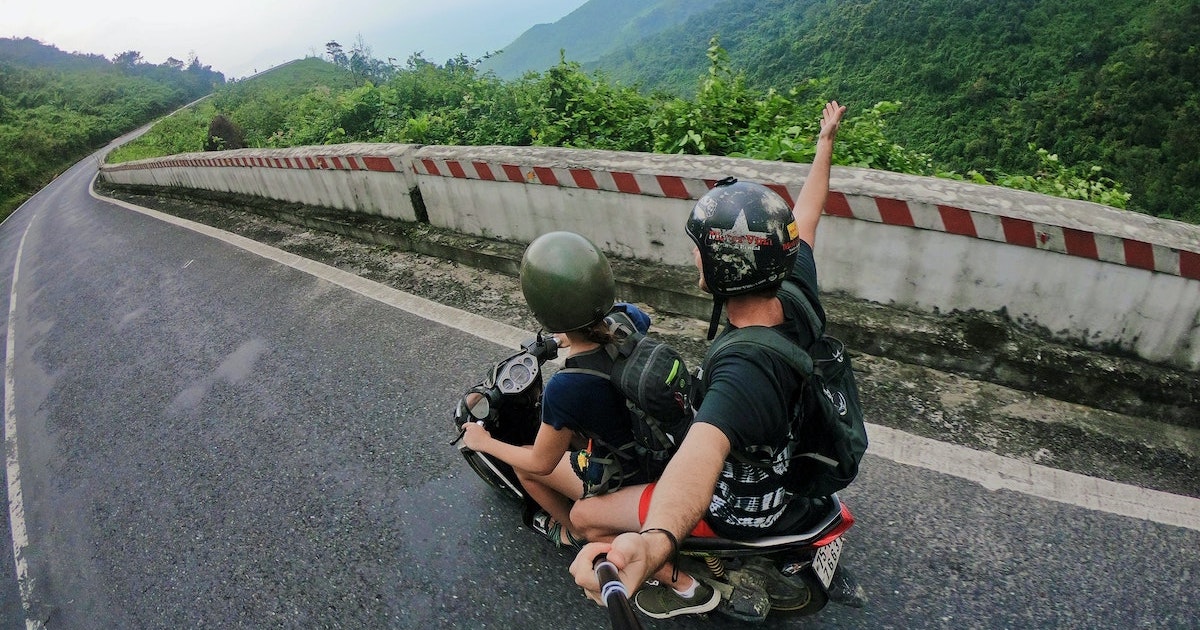
You might decide to journal for 15 minutes each morning while you wait for breakfast to be served or for the 15 minutes before you go to bed.
If you have a daily commute – to the beach, to your temporary job, or to your friend’s hotel, for example – take your journal with you and utilise the spare time.
3. Journal while you’re in transit.
If you’re constantly travelling, it’s probably not going to be long until you have a lengthy train, bus or flight ahead of you. As long as the road (or airspace) isn’t too bumpy and you’re not prone to motion sickness, I’ve found that this is the perfect time to get some travel journaling done.

Having a good chunk of time to dedicate to writing is excellent. Plus, if you do get preoccupied on your travels and go off track with your journaling, the plane ride or boat ride back home is a good stretch of time to pick up where you left off and get down everything you can remember in chronological order.
4. Try to write within at least two days of the events.
The sooner you write about a memory, the better chance you have at remembering the niche details. The ideal situation would be to write about your day at the end of the day before you sleep, but that’s not always realistic.
Instead, try to set yourself a goal of writing about a day or an event 48 hours after it happens. If you still fall off track, write about your travels within a week of the date they happened.
5. Don’t feel the pressure to be perfect.
The pressure to get something perfect is often the first obstacle in getting started. Life is messy – and so is writing a travel journal. It’s not going to be perfect the first try. Besides, what is perfect anyway?

Your travel journal is for you. It doesn’t matter how many spelling or grammar mistakes there are, as long as it’s legible. It doesn’t matter if you don’t have the motivation to write.
Bullet points or a few short paragraphs are better than a blank page. Otherwise, you won’t have anything to look back on at all.
6. Get creative with it.
Harnessing your creativity goes hand-in-hand with letting go of the need for perfection. You could draw caricatures of the interesting people you meet on the road. You could sketch a bird you spotted this morning. You could even make a chart or a diagram of your spendings so far.
Here are some ideas:
- Dedicate a few pages to creating caricatures of people you meet along the road.
- Create a ‘quotes’ section and jot down the most meaningful things people have said to you.
- Make a chart or a diagram of your spendings.
- Put together a recipes section where you write down your favourite meals and their key ingredients (don’t be shy about asking).
- A ‘rant’ section dedicated to unedited writing.
- Glue ticket stubs to the relevant pages.
- Make a collage out of ticket stubs, photographs and other memorabilia.
7. Keep your travel journal safe.
While a journal might not look that attractive to potential thieves, it’s probably invaluable to you. Therefore, it’s very important to take measures to stop it from getting stolen, lost or damaged.
Prevent water damage
Whether it causes smudged ink or crinkled pages, water damage can have a catastrophic effect on your journal. It’s also one of the most common ways that travel journals get damaged, as they’re prone to rainwater and liquid leakages in your luggage.
Some travel journals have waterproof covers, which add some extra protection, but this isn’t a foolproof solution.

Storing your travel journal in a waterproof pouch or pocket is the most effective way to prevent water damage.
A plastic bag is effective too. However, it’s more prone to getting punctured by sharp objects and it’s less durable (and less eco-friendly) than a permanent waterproof pouch.
The following waterproof bags and pouches will protect your travel journal:
- Syncwire Waterproof Pouch Bag
- Eono Waterproof Waist Bag
- Waterproof Dry Bag Set
Keep it in a safe or a locked locker
If you’re not planning on travel journaling while you’re on the go, it’s probably best to leave it locked securely in your accommodation. Many hotels provide safes; it will usually be listed on the list of features on booking websites such as Booking.com or Hostelworld.com .
Some hostels and homestays may provide a locker instead. For this, you will often need to bring your own padlock. I’d recommend bringing a set of TSA-approved combination padlocks .
Carry an anti-theft backpack
It’s unlikely your travel journal will get swiped from your backpack. Thieves are far more likely to target a mobile phone.
Still, you should carry your valuables (journal included) in an anti-theft backpack. They come with features such as secret pockets, durable zippers, and designs that make it hard for thieves to gain access.
Anti-theft backpacks:
- Della Gao Anti-Theft Laptop
- TcIFE Ladies Backpack
- Oscaurt Theft Proof Travel Backpack
- Waterfly Anti-Theft Backpack
8. Don’t forget a pen (and back-ups).
A pen is one of the easiest things to forget on your trip. While they should be easy to get a hold of, there are some locations where you might find it tricker (Cuba, the middle of the jungle, or a small town, for example).
I’d recommend using a clickable pen, because this is less prone to leaking ink than a regular ballpoint. Bring spares if you can, because the ink might run out mid-journey or just when inspiration strikes.
Travel journaling examples
As someone who preaches about travel journaling, I’ve decided to share a few entries from my own travel diary so that you can get an idea for the sheer variety of what you can write about and how you can record the details.
Entry 1: Havana, Cuba (Saturday 22nd January, 2022)

Anisah and I arrived in Cuba late, around 7pm. It was already dark outside and thunder-storming – lightning, heavy rain that soaked through my papers.
The airport was very basic and very stringent with Covid (masks, stalls and many checks) but we cleared security swiftly and had only our backpacks as a carry-on.
Outside, there were taxi drivers holding names, and, surprisingly, they weren’t at all pushy. Our hostel was supposed to arrange a driver to take us directly there, but upon ringing twice (and spending a daunting £3 per minute on the calls), it appeared the driver was stuck in his house due to the storm.
We ended up in a yellow, licensed cab (which cost 25 euros – but down to 20 when the lady hosting us paid on our behalf).
I felt a little unnerved in the taxi, probably because I was exhausted, and because without maps, the driver relied on memory and locals in Havana for directions – and there weren’t many outside due to the torrential rain.
Entry 2: Ubud, Bali (Thursday 20th June, 2019)
Woke at 1am for the Mount Batur sunrise trek.
- Mount Agun nearby “coughed” up lava three weeks ago, according to our guide.
- 1,700-metre climb – our time was 1h35 but it felt way longer.
- Very steep, gravelly, and one of the toughest climbs I’ve done in my life. At one point, I told Jess, “Go on without me”.
- I ate a boiled egg and a banana at the top. I was still starving.
- Monkeys and dogs were fighting on the mountaintop.
- Monkeys almost stole my bag. They successfully stole a purse from another lady.
- We lost Pablo (Goncalo’s cousin) at the top of the mountain. The guide (jeans and sandals) was going to leave him behind, but we refused.
Entry 3: Havana, Cuba (Monday 31st January, 2022)
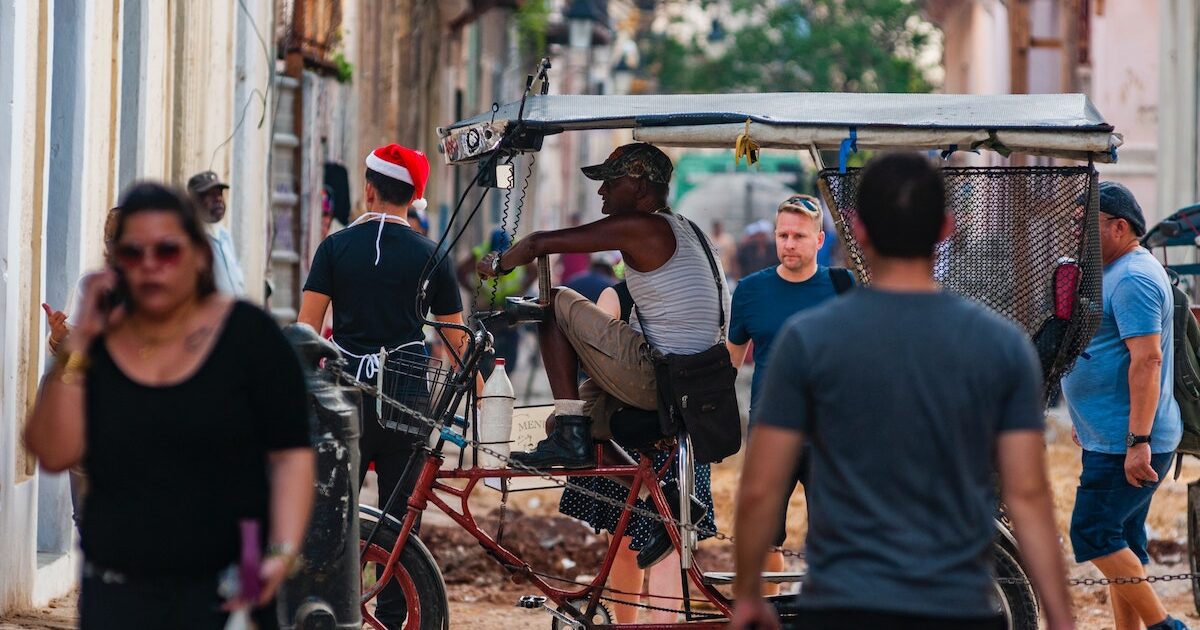
Our host gave us the cheque. We were short by 700 pesos. We went to hunt down an ATM. The ATM declined my card, as did the second ATM… and then the third ATM.
We started to panic, so we went to the Kempinski Hotel in Plaza Mayor to use their WiFi to contact my bank. It quickly emerged that the WiFi had completely cut out city-wide. At this point, we really started to panic. We had to leave for the airport in one hour.
We’d used up all of our options, so I told Anisah we’d have to ask someone for money. She was very dubious. We were walking down my favourite street when I spotted an older man and a younger woman, both blonde, looking lost and carrying cameras and bags.
I took off my mask and asked ‘Ingles?’. Nope, they spoke Spanish. In broken Spanish/English, I started to explain ‘plane’ (hand motion), ‘Londres’ (London), ‘desperate’, ‘taxi to airport’, and ‘short by 700’.
They replied, ‘No, a taxi should be 20’. They thought I meant euros! I said, ‘No, no. 700 pesos’. He nodded, ‘Oh, good price!’. To my disbelief, he pulled out a fat wallet filled with US dollars and pesos, and handed me a 500 and a 200. I nearly cried, but settled for tapping the lady’s arms and doing a prayer hand motion. People are truly good at heart.
Travel journaling: How do you make a memorable trip?
There are two halves to creating a travel journal. The first half is the part where you explore, observe and investigate .
The second half is the part where you write or create .
If one half of the formula is missing, you won’t have a travel journal at all.
Similarly, a travel notebook that documents seven days spent beside a swimming pool, tanning and reading a book, is unlikely to be as riveting as a travel journal that documents a journey into Dubrovnik’s old town, a bus ride through central Vietnam , wild swimming through waterfalls in Cuba or a cruise over the backwaters in Kerala , for example.
- Guide to the Parque Guanayara Waterfalls in Cuba
- Things to do at Alleppey and its backwaters

1. Research your trip.
A great motto, and one I live by, is ‘plan to travel without a plan’. If you want to make your trip memorable, it’s just as important not to over-plan as it is to dive in headfirst without a scooby of what you are doing.

Research enough so that you have a huge backlist of itinerary and destination ideas. Make a list of local accommodations that you like the sound of. Book essential, long-distance travel only.
You don’t know what will happen on the trip: delays, unexpected new acquaintances, weather events, romances, and so on.
Sometimes, the most interesting stories form from following your heart or your intuition, so if you’ve planned every single detail, you’ll end up boxed in.
Here are some ideas for your research:
- Research blogs to get practical advice from those who have visited a destination or attraction previously.
- Confirm the main modes of transport, currencies, and WiFi accessibility in your chosen destination. Practical details matter.
- Create a list of destinations and activities you’d like to engage in.
- Highlight your non-negotiable activities, desirable itineraries, and nice-to-have experiences. That way, you know which activities are the most important to you.
- Try to avoid tourist traps and opt for more authentic, local or offbeat travel experiences. These are often the most interesting experiences to write about.
2. Book your flights.
After your research is complete, the first thing you need to do is to book your flights. Skyscanner should be your go-to tool to search for flights. It scans the internet for the cheapest deals, routes and even the most eco-friendly transport options. Google Flights is another useful tool, which you can use to confirm that you’ve found the best deal.
3. Book interesting accommodation.
The accommodation you book has a direct impact on your travel journal entries. It can create drama, it can spice things up a little, or it can act as a relaxing backdrop.
Unique accommodation might liven up your entries: search for things like treehouses, camping tents, shepherd’s huts, and themed resorts.
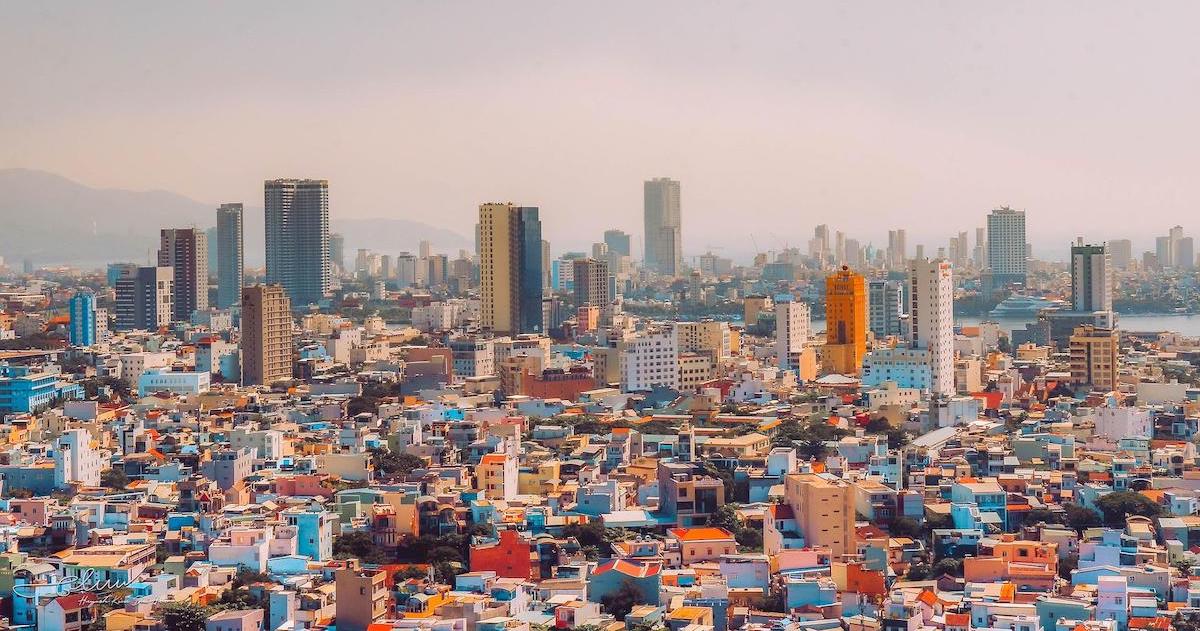
The following sites are my go-to websites for booking accommodation that will jazz up my travel journal entries:
Booking.com : Booking.com has a wide selection of accommodation, including eclectic stays. I also find that it generally has the best price, compared to other booking websites advertising the same hotel or accommodation.
Hostelworld : Staying in a hostel is one of the best ways to introduce new, wise and quirky characters into your diary. As most hostels have communal spaces, it’s very easy to delve into a deep conversation with a stranger, which is often one of the most interesting parts of travel journeys.
The act of staying in a dorm room or shared accommodation is eventful in itself; you don’t know what sorts of stories you might get out of one night spent in a dorm room. Was there a fight for a particular bed? A sleep talker? Late-night card games and conversations?
Homestay : Homestay specialises in accommodation where you stay in the home of a local. This is a brilliant option for those who are writing a travel diary, because it enables you to connect with the community, learn about local customs and have a more authentic travel experience.
4. Engage in more offbeat travel experiences.
Generally speaking, you won’t get as much of a story out of a tourist trap as you will out of a more unusual or hands-on travel experience. After six years of travelling, this is the biggest lesson I have learnt, and exactly why my blog specialises in offbeat travel experiences.

So, how do you find offbeat travel experiences for your travel journal?
- Ask at your hotel or hostel for local-led activities. Questions such as ‘where do you eat?’ or ‘where do you go to party?’ are also great ways to find local spots over tourist traps.
- Search for unique travel experiences on GetYourGuide . They list local-led travel experiences, which are a great way to meet fellow interesting travellers and get an insight into the offbeat sides of a destination.
- Use tour organisations that label themselves as ‘local-led’, ‘experiential’, ‘offbeat’ and ‘immersive’. These are tailored towards giving travellers unique, hands-on experiences, and not taking you on the usual tourist trails.
Travel journaling: How do you write a travel journal that is worth reading?
Not everyone wants to share their travel journal. However, if you do want to write your travel diary for an audience – whether that’s family, friends, an online following or a potential future publisher – it’s going to need to be worth reading.
1. Make your first draft in a physical travel journal.
Writing in chronological order and as soon as possible after the events happen, make your first draft in a physical travel journal.
Remember, that you’re going to edit your travel journal when you’re back home, so the most important thing isn’t writing perfectly. It’s about being consistent with your writing schedule and getting the details down on paper.
2. Be as specific as possible.
Specificity is even more important if you’re going to share your travel journal in one form or another.
Use exact times, exact dates, full names, ages, and detailed physical descriptions. This will bring your story to life, especially for those who weren’t there to watch it unfold in person.
3. Feature specific characters.
Just as a novel would be incomplete without a series of in-depth and interesting characters, your travel diary should also feature characters.
It doesn’t matter if they’re fleeting and disappear after an entry or two. The important thing is that your reader can envision and relate to your character.

That might mean describing them physically, disclosing their name (or pseudonym) and age, as well as describing their little quirks and mannerisms.
You should try to quote them directly when possible, and explore their mindset and their backstory.
4. Write up your travel journal.
When you arrive back home, write up your travel journal into a digital format, correcting spelling and grammar mistakes as you go. This will create a second copy of your journal, just in case anything happens to the physical copy.
5. Edit your travel journal.
If you’re going to be sharing your travel journal, the most important part is the editing process. Your journal may only need a light edit, which corrects any spelling or grammar mistakes and makes it more legible.
However, it may need a deeper edit if you’re truly going to post it online or send it to a publisher. The execution, plot, and characters will be more important in this case.
Traveling journaling: Types of travel journals
There are several types of travel notebooks, and they all have their specific advantages and disadvantages.
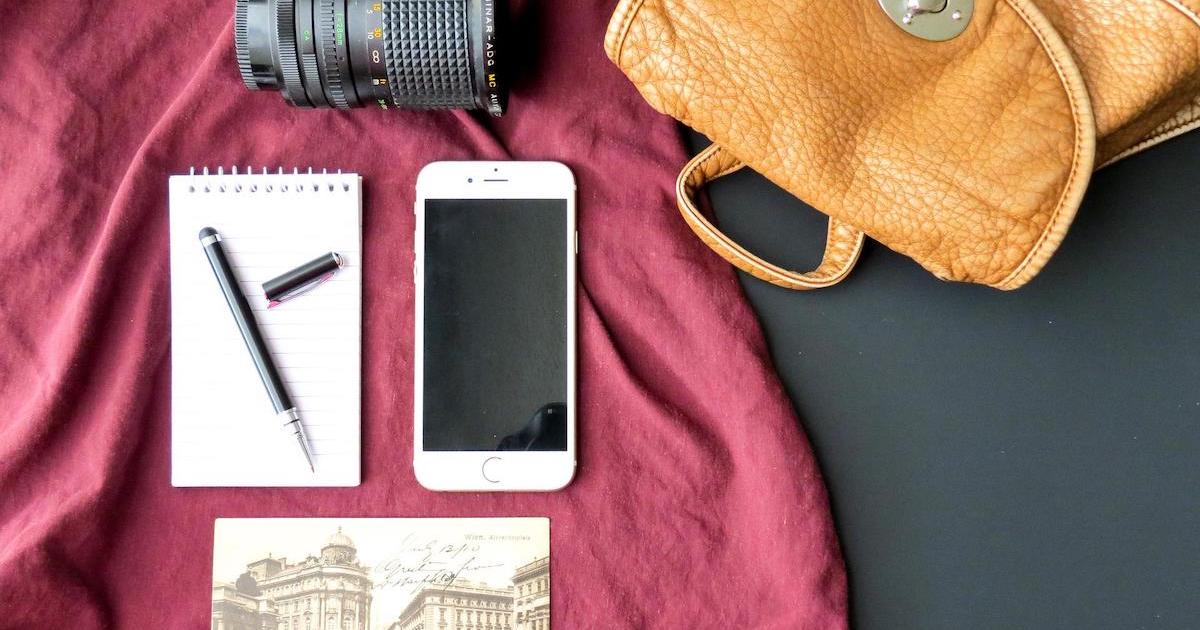
There are also some clear criteria you should be looking for out of a high-quality travel notebook:
Number of pages: The number of pages you’ll need will depend upon the length of your trip. If you’re travelling long-term, it’s better to have a notebook with a large number of pages rather than several, smaller notebooks which will take up more space overall.
Paperback or hardback: While a hardback notebook is more durable, a paperback journal is more lightweight. If you’re limited by space or weight limits, opt for a paperback. Size: Notebooks come in a variety of sizes, such as A4, A5, or A6. In general, an A5 notebook is ideal for a travel diary because it’s compact enough to carry in your packed or day luggage, but not so small that you’ll run out of space quickly.
Line size: Unless you have large handwriting, a journal with fairly narrow line sizes is ideal, because you can fit more writing onto one page, and therefore into one notebook. You could also choose a notebook without lines at all, which gives you more freedom over the size of your handwriting, but can end up with messy, undulating lines.
Paper thickness: Thinner paper is usually ideal, unless you are planning on painting, colouring-in or using heavy ink. Still, bear in mind that ink can bleed through the paper if it’s too thin, ruining other pages in your diary.
Binding: The binding of your notebook is important too. Ideally, you want a notebook that can spread out flat while you write and one where you don’t need to hold the edges of the pages down. A spiral-bound notebook is ideal over a smaller, tightly-bound notebook, in this case.
Traveling journaling: A6 travel diaries
Best for: weekend trips.
- Sovereign-Gear Antique Brown Refillable Travellers Notebook : This A6 notebook has a leather case and a refillable design, which includes three packs of paper (one unlined, one lined and one made from kraft paper). Even better, it has a PVC water-resistant zipper pocket for your valuables.
- Avocado and Spice Hardback A6 Notebook : With a hardback cover and 200 pages, this A6 notebook is an aesthetic travel diary that comes with its own protective velvet bag. It comes with the option of dotted, lined or blank pages, and has a built-in pen holder and a bookmark.
- Antony Olivier Leather Journal : With unlined paper and vintage brown leather, the Antony Olivier Leather Journal is a premium A6 notebook. There are 200 pages, all unlined.
- Newestor Pocket Notebook : The Newestor Pocket Notebook is small enough that you can tuck it into your back pocket. It’s probably not ideal for those who are going to be writing in long prose, but those who are planning on documenting their travels with bullet points or short paragraphs will have 144 pages at their disposal.
Travel journaling: A5 travel dairies
Best for: longer trips.
- EMSHOI A5 Notebook : With the option of lined, dotted or squared pages, the spiral-bound EMSHOI notebook has 640 A5-sized pages. It also has a water-resistant PVC cover.
- Antony Olivier Leather A5 Notebook : This is an A5-sized version of the high-quality, leather Antony Olivier notebook. It includes unlined 200 pages and a journal enamel pen.
- Silvine A5 Executive Soft Feel Notebook : The Silvine 15 Executive Notebook has 160 pages with a sewn case, inside pocket and ivory paper.
Travel journaling: Watercolour travel journals
Best for: artists.
- Seawhite A5 Travel Journal : This notebook has 60 pages and a back pocket. It’s also completely vegan.
- Hahnemuhle Watercolour Book A5 : This sturdy hardback book has 30 sheets of natural white fine-grain paper, ideal for panoramic paintings.
- Tumuarta Watercolour Journal : Designed as a travel watercolour notebook, this journal has 48 pages, made of 25% cotton. The pages can tolerate light washes and they’re micro-perforated, so you can tear out a page if you need to.
A travel journal is a great place to jot down travel affirmations if you experience anxiety or nerves before or during a trip or to write down packing lists and other plans. See where I’ve been to start planning your next trip.
Katie Treharne
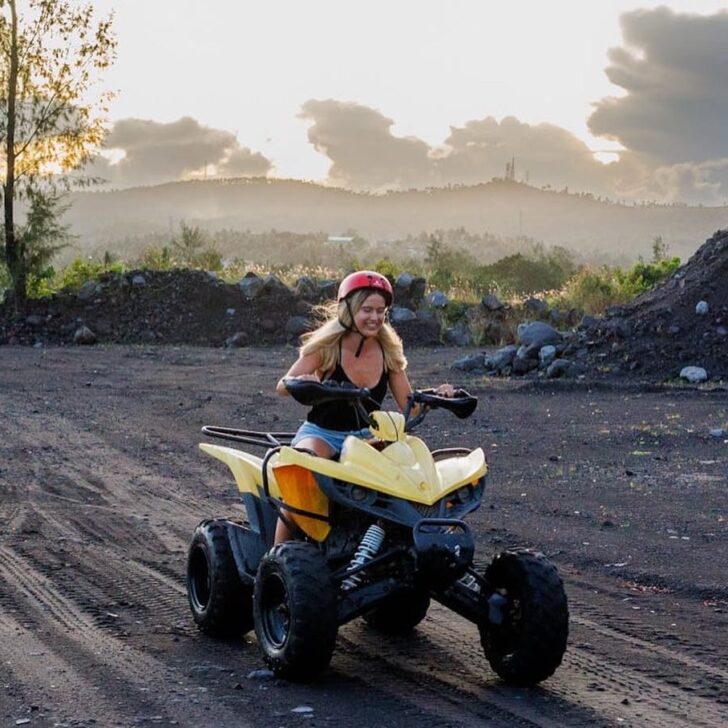
I’m Katie, the owner of Escape Artist Katie. I have been travel writing since 2018, including writing for luxury travel magazines and publications such as Wanderlust.
As well as being a digital nomad who works and lives abroad permanently, I’m a big advocate for offbeat travel and pushing yourself out of your comfort zone.
I hope you found my article useful – find out more about me here or keep up with my travels on Instagram .
What is Adventure Log?
AdventureLog is the best tool to document your tours.
On AdventureLog.io you can easily create your own tour diary. For your eyes only or for the whole world - you decide. No advertising, no binding to a manufacturer.
File upload
You can upload GPS data files in FIT, GPX and IGC format.
Import from Suunto
As a Suunto partner we support your watch directly. With one click you import your latest tracks.
Import from Garmin
We are Garmin partners and can read your records directly from Garmin Connect.
Import from Polar
Thanks to the partnership with Polar, you can import your tours directly from Polar Flow.
Without GPS
Even without GPS data you can create entries by selecting places where you have been.
Log your tour in 1 minute!
Take a look inside.

You need a GPX or FIT file of your tour. Paragliders can use IGC files. You can download these files from your GPS device, or you import them directly:
We are partnering with Garmin , Suunto and Polar .
It couldn't be simpler!
Of course you can also create a tour without GPS data.
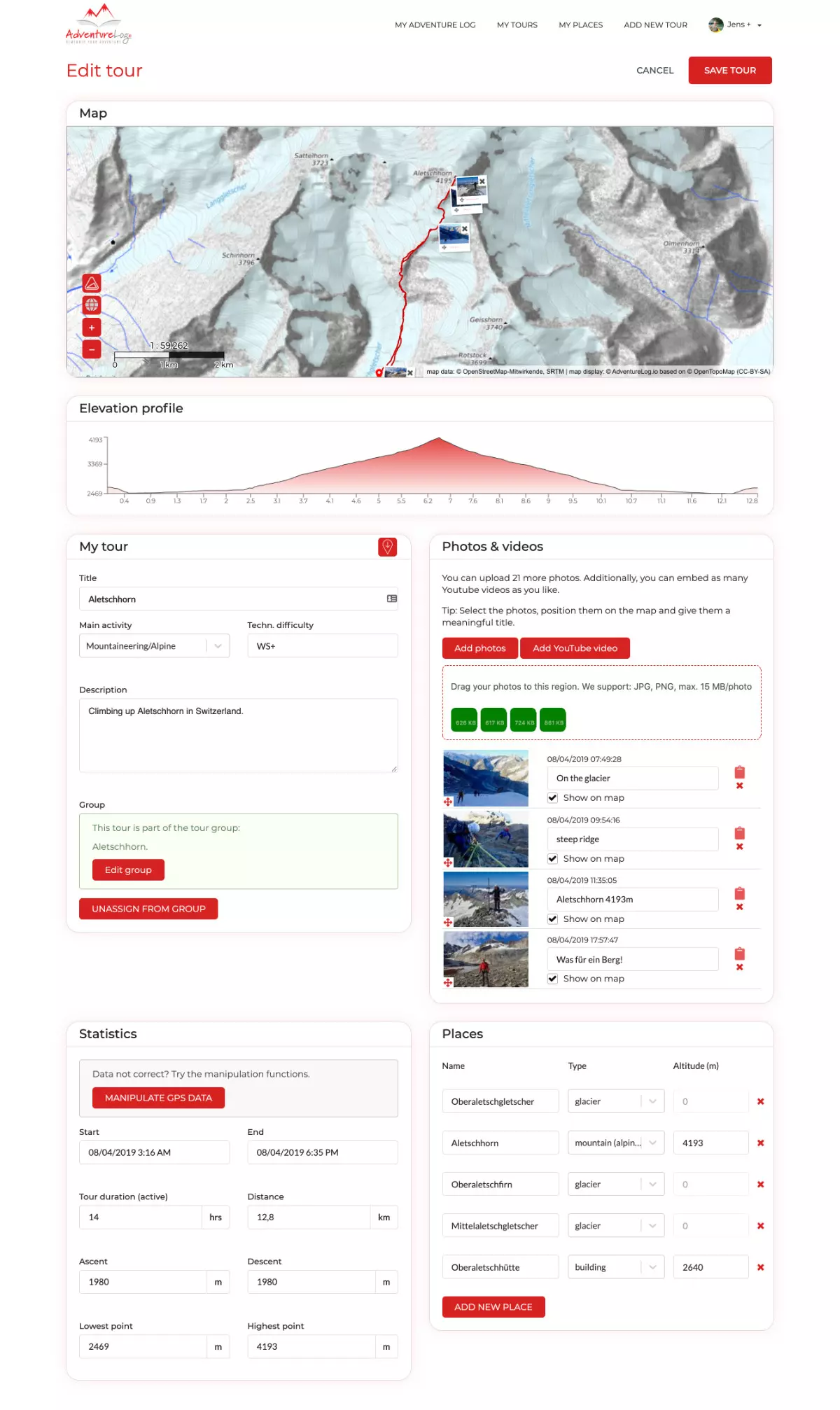
5 tours per year 10 photos per tour perfect for trying out
Infinite tours 50 photos per tour + various additional features


- Call us +44 (0)20 7581 4178
Spend £200.00 more to get free UK delivery. You have activated free UK delivery.
Your basket is currently empty.
How to Write a Travel Diary

Travel diaries and notebooks are a wonderful thing. When a person is asked what their hobbies and interests are, the chances are that one will be travel. The urge to explore new places and experience different cultures is something so many of us have in common.
Spring especially sparks a wish to go abroad and have these experiences as we are all getting ready for summer sunshine. Whether your next trip is imminent or in a matter of months, beginning a travel diary or journal is a fantastic way to prepare and get excited for your upcoming adventure… Furthermore, why not make it a luxury travel diary?
What is a travel journal?
A travel diary (or travel journal – whichever you prefer), is a book in which you can accumulate the beginnings of travel plans, from aspirations to the nitty gritty of budgets, as well as daily logs of good and bad memories once you make your trip. It provides an excellent space to reflect on your journey. In fact, a written reflection in your diary is a wonderful way to round it off prior to planning your next trip in another book. It is a way of remembering all the highs and lows of your trip, allowing you to cherish them forever and learn from them for your next adventure.

How to write a travel diary?
All great trips begin with aspiration. My own travel journals begin with listing the places which I aspire to go to – usually either multiple countries or places within one country. From here I can use the diary to work out where is possible from a combination of holiday time available and budget… yes, the less exciting bit.
Once the selection process is complete it’s time for the exciting bit which is finding places to stay, sites to see, activities to do, and for the foodies out there, all the must-try restaurants in the area.
You can then use this information to create an itinerary. Next stop – your trip!
While on your trip is when the journal moves from being a notebook to your diary. That way you can record, when possible, your experiences, the feelings you had experiencing them (good or bad), people you’ve met and the conversations you had, and even include any memorabilia. Following your trip, the book should be used to go over the high moments and the low moments and find what you’ve learned from them to make the most of this knowledge for your next trip.
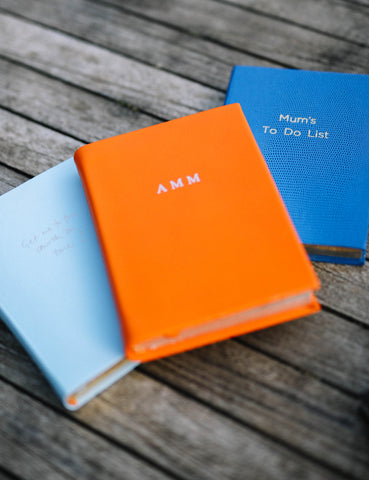
Why write a travel diary?
Regardless of the trip’s purpose, whether it be for business, an event, or a great adventure, writing a travel diary is a fantastic way to ensure you really stop and absorb your surroundings. It enables you to capture the moments so that you really remember them.
I have travel journals from years ago that bring a smile to my face each time I come across them and I often have a flick through because of the extraordinary and funny details I recorded. Both the act of writing your travel diary and in particular the moments you have looking back over them are hugely fulfilling.
By putting descriptions of your whereabouts and your thoughts and feelings on a page, you find you notice more about the cultures, food, and people you are experience – all incredible things to look back upon from a different perspective in the future.
Aside from documenting memories, these journals look fantastic lined up on a shelf. My preferred journal is the Noble Macmillan Calfskin Lined Journal (pictured below). They come in an array of colours and the elastic strap is an invaluable extra to allow your book to hold all sorts of added memorabilia such as train tickets and post cards.
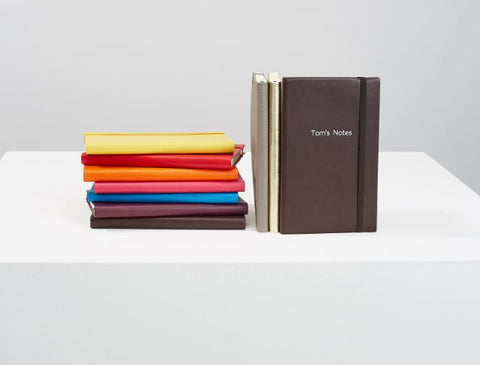
A travel diary is an excellent reminder of why to travel. A look at why you’ve been saving that money and not buying the pair of shoes you don’t need or going on just another night out – things and moments that won’t stay with you forever like those you have travelling.
Although my favourite is indeed the Noble Macmillan Calfskin Lined Journal , we have plenty of options suitable for whatever your preferred size or colour. Simply check out the notebooks and journals collection of the stationery section of our website to explore your choices.
And if you are the type of person who just loves writing, check out our guide on the joys of writing handwritten letters.
Recommended Articles

Perudo: The Ultimate Guide
For many years Noble Macmillan has been known first and foremost for our gorgeous handcrafted
5 Steps to Achieving a Clean & Organised Make Up Bag
Make up comes in many different shapes and forms and more often than not is a long-term investment. Items like...
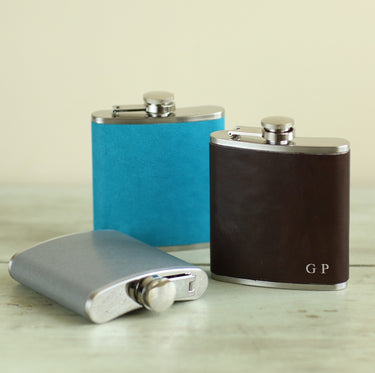
What are Hip Flasks Used For?
Hip Flasks – or some form of hip flasks – have stood the test of time remaining both a practical...

The Ultimate Travel Bag Essentials
Noble Macmillan Travel Essentials include our Luxury Leather case and Portable Phone Bank, Travel Wallets, Travel Backgammon and Personalised Playing...
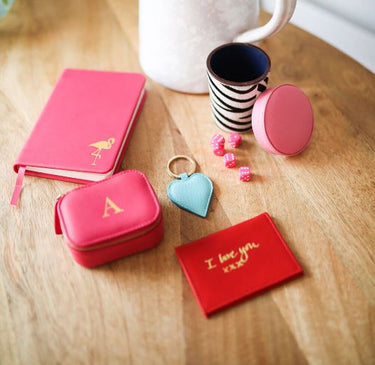
7 Mini Gift Ideas For Every Occasion - Noble Macmillan
Discover a fantastic collection of mini gifts from Noble Macmillan. Ideal for every occasion, explore our amazing mini gift ideas...

Wedding Albums: Everything to Know – Noble Macmillan
Discover everything you need to know to create the perfect wedding album at Noble Macmillan. Cherish your special day and...
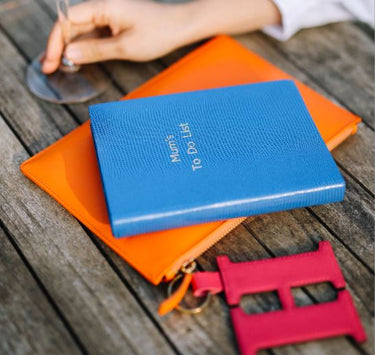
Luxury Mother’s Day Gift Ideas – Noble Macmillan
Find the perfect gift for the woman in your life with the Mother’s Day gift guide from Noble Macmillan. With...

Leather Care Guide
Fashion trends and the materials the clothes, accessories and other luxury goods which set these trends are made from, are...
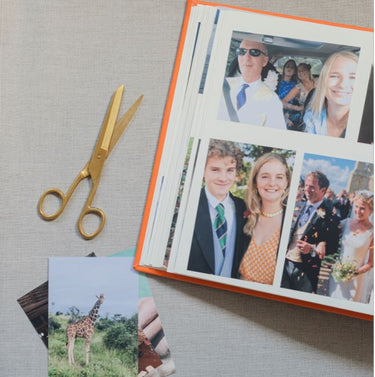
How to kick-start the year with Noble Macmillan
The festive period can mean something different for all of us. For some it is time away from work to...

Unique Gifts for Friends (that you might want to keep yourself!)
For the most part when buying gifts, there is an understanding that a good one is one that you would...

The Origin of Vintage Board Games and Card Games
For many of us, board games and card games have been a big part of childhood - whether as a...

How to wear a cross body bag
An article covering how to wear a cross body bag - encompassing exactly what is a cross body bag, how...
SIGN UP NOW FOR 10% OFF YOUR FIRST ORDER
Sign up now to receive 10% off your first order (excluding personalisation) and for future special offers and updates.
- Share full article
Advertisement
Supported by
41 Days, 26 Shows, 10 Countries : A Rock Tour Diary
Inside the bubble of a band’s tour, continuity is everything and happiness is relative, writes the guitarist for Tears for Fears.

By Charlton Pettus
We are sitting having complimentary breakfast on the roofdeck of the Sofitel overlooking the Vieux Port de Marseille and bitching .
The sun glints off the morning swells and the aluminum masts of the sailboats, which bob like a vast paddling of sleeping ducks along the quay. Below us lies the Palais de Pharo, and, just across the narrow harbor mouth, Fort St. Jean, past which a ferry is lazily steaming out to the Chateau d’If, the island prison from “The Count of Monte Cristo.”
I’m with Doug, the keyboard player, and Jamie, the drummer. When we’re not touring with Tears for Fears we’re 50-something Valley-dads in polo shirts and Priuses. But right now we’ve been on the road for four weeks of a seven-week European tour and we are over it. On the bus we have been compiling a list of our complaints. These include, stale Ritz crackers, no laundry, not enough movie choices on the bus media player, too hot at gigs and too cold at gigs.
Of course it’s a joke but underneath there is real frustration. This is the nature of the touring beast. All happiness and dissatisfaction is relative. Any hint of inequity is toxic. Here in Marseille we are miserable because, while the Sofitel Vieux Porte, where we are spending two days off, is fine, Curt Smith and Roland Orzabal, the principals, are at the Cap d’Antibes Beach Hotel and Domaine de Manville in Les Baux-de-Provence respectively. That rankles . Marseille is, we decided, a lovely place to live but you wouldn’t want to visit here, while Cap d’Antibes and Les Baux-de-Provence are, well, they’re simply next level, exquisite, Provence at its rosé swilling best.
Let me back up, this snit has been brewing for a while. When we first arrived in London for rehearsals we were all staying at the Corinthia off Trafalgar Square.
The Corinthia passes the primary test for touring musicians; when you walk through the lobby most of the other guests look at you as if you don’t belong there. And, we saw Mike Campbell from Fleetwood Mac every day at breakfast, met Stevie Nicks (swoon) leaving the bar, and sat across from David Blaine doing card tricks our last morning. All good, all as it should be.
But then, after a one-day trip to Manchester, we returned to London and the purse-string minders had pulled a New Coke. The A party (that’s the Artists), returned to the Corinthia while the B party (Band, that’s us) was exiled to the St. Martin’s Lane Hotel, a couple of blocks, yet a world, away. It was cheap and disposable in all the ways the Corinthia was elegant and substantial, offering whimsical design in lieu of quality. That night, in our thin-walled rooms we texted each other pictures of our respective dead potted plants and began to stew.

And then Copenhagen happened. Copenhagen was the first big break in the run. Time to relax, recharge and bank sleep. People had spouses coming in, it was a little mid-tour vacation. Or not. The A party, and more irritatingly, both tour managers, were staying at The Nimb. Go on, Google it. Right in the center of Copenhagen, The Nimb is a boutique hotel combining, “Scandinavian design traditions and Moorish aesthetics.”
All right, I know that sounds a little weird, but trust me, it’s pretty swanky. Anyway, while they were there, strolling around town and the hotel-adjacent Tivoli Gardens, we were at the AC Bella Sky. The Bella Sky is a pair of conjoined, misshapen blue and white towers in the middle of nowhere between the city and the airport. The rooms are completely devoid of any trace of art or decoration. What minimal furnishings there are, are purely and puritanically functional, as if Ikea had been commissioned to design cells for a Federal Super-Max prison.
The result is a space most conducive to reflection and self-examination, to considering the decisions in your life that have led you here. Bitter Scandinavian winds lash the surrounding barren marshland. In mid July we had to dig out sweaters and jackets to brave the 10- minute walk to the train station where one could theoretically board the automated tram into the city, 20 minutes away.
Even the C party, the Crew, were staying in town. And apparently at a pretty nice hotel. This was utter humiliation. While the A party was dining at Noma on moldy asparagus and God knows what other marvels Chef Redzepi summoned , and the crew were downing Danish Hof and aquavit along the harbor, we were in the outer boroughs trying to figure out the trains. The pot of resentment was bubbling in earnest now.
In fairness, we are pretty spoiled. It is not unusual for bands to have tiered accommodations, but it is for us. Historically, Tears has always been an exceptionally generous organization, we fly business on long flights and, generally, stay where the artists stay. But, this time the tour had come together late, and it was Europe in the summer, meaning prices were ludicrous and availability limited, so there we were. In the Ikea Super-Max. With dead plants.
Here’s the thing, bands on tour tend to devolve into older models of hominid society. Much older. Think hunter-gatherers, Crusaders, shrieking Dothraki hordes, or, more reasonably, Dust Bowl circus carnies, traveling town to town, entertaining (and swindling) the rubes. The point is, there is a natural tendency to focus all feelings of community within the tour bubble and to dehumanize the world outside. There is us and there is not us.
Continuity is everything. Familiar faces, the reassuring sameness of the backstage rider: Deli platter, cheese plate, one bottle of Woodford and two Malbecs, coconut water, muscle milk (God knows how that even got on there), a case of Fiji, and, crucially, one bag of Double Chocolate Pepperidge Farm Milanos. In every dressing room. Every show. This is reality. Nothing outside the bubble is ever this real.
By the end of the tour we will have been gone for 50 days, including rehearsals, playing 26 shows in 41 days, traveling by plane, train, bus and car through England, Germany, France, Belgium, Luxembourg, Italy, Spain, Denmark, the Netherlands and Israel. It’s the entire 19th century English gentleman’s Grand Tour crammed into seven weeks. Under these conditions the delicate fabric of our society can get stretched thin.
After Marseille we are all reunited in Nîmes. The A party look tan and rested. When they say they have missed us and been a little bored in their Provencal spa retreats, eyes roll but the collective sense of humor is buoyed by the setting. The Arena atNîmes is an absolutely breathtaking Roman amphitheater. With the possible exception of Red Rocks in Colorado, it is the most visually extraordinary venue we have ever played.
But, the respite is short. Tonight we bus to Lyon after the show. After that show we get back on the bus and overnight all the way across France, to Carhaix in Brittany. After that show we head to Valencia in southernmost Spain. This drive is so long we’re supposed to do it in two stages, an all-nighter to San Sebastian, a day off there, then overnight again to Valencia, playing a show the night we arrive. It is going to be exhausting, and, we know from experience, unkind to aging spines.
The A party will not be joining us on the bus. They have arranged to fly (although, in fairness, their itinerary doesn’t look like a lot of fun either). Backstage we all agree, it looks grim. But then Roland has an epiphany. Yeah, we all think, cancel Carhaix. But that’s not his solution. He has something better in mind. The literal transmutation of money into time: A Private Jet.
It’s not that bands don’t do it this way, some famously do. I remember seeing U2 and learning that they were hubbing out of Paris, flying in private for every show. And then there was the tour we did in America with Hall and Oates. Daryl apparently flew home every night. But we’d never done it.
Private is magic. Deus ex machina. David Blaine’s got nothing on us. This is an improbable escape from an impossible situation. We’ll fly day of show to Carhaix, play the show, then get back on the jet and, in an hour and a half, we’re in Valencia, where we’ll wake up . with an entire day off. Paella on the beach. This changes everything.
It’s all arranged and just like that everyone’s mood shifts. Band of Brothers, all for one and one for all. We got this. After the Nîmes show we drive to Lyon, get in at 3:30 in the morning. Yes it’s a Sofitel, yes the A party is at the Villa Ma ï a in vieux Lyon but you know what? We don’t care. We have a private jet.
Lyon is beyond lovely. If you’re thinking of going on holiday to France, go to Lyon. It’s smaller than Paris and everyone will be speaking French. I’d just been to Paris and it was overrun with tourists, everyone speaking English or Chinese or, really, anything but French. And the food. Lyon is known for its cuisine and with good reason. Every dish we collectively sampled was amazing, from the simplest sandwiches to the filet with obligatory Lyonnaise potatoes to the confit of duck at catering before the show. It is a town that takes its food very seriously, and it shows.
The show was at another ancient amphitheater, the Theatre Romains de Fourvi è re . Apparently it is a local tradition for the patrons to throw their seat cushions at the stage to show their approval. At the end of the show it was literally raining little green pillows. Amazing. Afterward we ended up at Look, a little bar in the old city that stays open until four in the morning. Serge Gainsbourg on vinyl, quirky owner doling out gratis black Russians for no apparent reason, eclectic clientele all unabashedly chatting with friends and strangers in muddled French and English. It is the Paris I remember from my twenties but haven’t seen since. Go to Lyon. But don’t tell anybody. Don’t ruin it.
The next day, after a leisurely lunch of sandwiches de poulet we are driven to the tiny airport in Bron that services the private jet crowd. It’s not what we expect. There’s just a bare little space with a counter, like the Alamo car rental office at a run down regional airport. We’re a motley group, a little disheveled, everyone in shades, Carina, the background singer, with toddler in tow. A contrastingly well put together family is coming in from the runway at the same time, father with sleek, brushed back long hair and sock-less slipons, mom with understated elegant traveling ensemble and twin little girls in white linen dresses. This is what private jet travelers are supposed to look like.
There’s a single small jet out the window refueling. It’s really small. Alarmingly small. The pilot comes in. He’s a tall German, relaxed, confident, top of his white uniform unbuttoned. He ascertains that we are in fact his clients and invites us out to the plane which is apparently nearly fueled up. The tone of this world starts to come into focus. It isn’t diffident or condescending as it first seemed, rather it’s casual, assured. It reminds us of the old Ladies Room skit on SNL. We are guests in a private club. If you are here, you belong.
Newbie tip, if you happen to gain entree to the private jet club, nothing gives away your arriviste status quicker than having to open your luggage on the tarmac to get the liquids out. That was us. Private jets fly at around 40,000 feet and their luggage section isn’t pressurized. In other words, your little bottle of shampoo is a bomb. It has to come in the cabin. The protocol is the exact opposite of commercial. Going through private security on our post-gig flight to Valencia no one blinked as a cardboard box with an open bottle of bourbon and two Malbecs bobbled through the scanner.
Flying across France was gorgeous. At 40,000 feet you see the curvature of the earth and yet there were no clouds to obscure the patchwork of Burgundian farms below. No clouds, that is, until Brittany. Suddenly, there was a dense, solid cover, like the potatoes on a shepherds pie or the crisp on a fruit crumble. The flight attendant came out from a consultation with the pilot and said, and I am quoting exactly here, “We’re going to try and land but the weather is really bad down there.”
Wait. What does that even mean? “Try?”
Of course, she meant try to land at the intended airport with plan B being a landing at an alternate strip. But in the moment, as pretty fearful fliers (as at least three of us were), this was bad. We were white-knuckling the entire way down. It was the scene from the movie “Almost Famous” when the band thinks the plane is going down and everyone confesses their deepest darkest secrets. We descended through clouds, seemingly forever. And then, with almost no warning we saw and touched down on the runway at the same moment. The visibility was zero, cloud sitting on ground. We’ve all been through dozens of instrument landings flying commercial, all I can say is in private it’s a different thing.
But we were down.
We played the show in the Carhaix rain and got Mercedes SUVs back to the airport for another quick and painless flight and another SUV. And in the morning we woke up in our hotel in Spain. A couple days later we flew to Tel Aviv (commercial coach, and wow, was that a come down) for a show at the Menora Mivtachim Arena . We all stayed at the same hotel in Israel, the exquisite Setai in Jaffa. All was, at least for the moment, right with the world.
Luxembourg, who knew? A little bit France, a little bit Germany, utterly charming.
One day to Instagram all of Europe? Go to Ghent. No one will know the difference. Half a dozen Cathedrals, canals, piazzas, beer and genever (a close relative of schnapps but a lot sexier) all in a few blocks.
France? (As mentioned above) Lyon.
Harry Potter? York.
Cathedral? Have to go with Cologne (although York is pretty great too).
Foodie? Copenhagen. Nordic is so right now right now.
Moving? Consider The Netherlands, particularly The Hague. Everyone rides bikes, is tall and fit and seems inordinately pleased with themselves.
Charlton Pettus is the guitarist for Tears for Fears and the author of “Exit Strategy,” which is available in paperback from Hanover Square Press.

52 Places to Go in 2019
A starter kit for escaping into the world.
Follow NY Times Travel on Twitter , Instagram and Facebook . Get weekly updates from our Travel Dispatch newsletter, with tips on traveling smarter, destination coverage and photos from all over the world.
Find the Right Soundtrack for You
Trying to expand your musical horizons take a listen to something new..
Meet Carlos Niño , the spiritual force behind L.A.’s eclectic music scene.
Listen to a conversation about Steve Albini’s legacy on Popcast .
Arooj Aftab knows you love her sad music. But she’s ready for more.
Hear 9 of the week’s most notable new songs on the Playlist .
Portishead’s Beth Gibbons returns with an outstanding solo album.
- Journal Types
- Travel Journal
Are you planning a trip? Looking for a way to document your adventure? Look no further than a travel journal! A travel journal serves as a personal memoir of your journey, capturing moments, emotions, and experiences. Not only does it preserve your memories, but it also allows you to reflect on your trip long after it's over. In this article, we will explore travel journal ideas, templates, tips, and how to write a travel journal that will become a cherished keepsake.
What are travel journals?
Travel journals help you to write and document about the experience you had during your trips. You can include the written description of the place that you have visited, list down your itinerary, the photos that you took during your trip and even voice recordings that you have made during your time. Travel journal is one of the most popular journal amongst the different types of journals.

What is the purpose of travel journal
1. discover and learn more things.

Traveling usually leads one to gain new experiences and discoveries. By writing down your experience, you will get to understand your surroundings better, reflect and remember the discoveries that you have made during the trip.
2. Travel memories not to be forgotten
One of the main purposes of a travel journal is to preserve memories and experiences. By documenting your travels using a diary software , you are creating a record of the places you visited, the people you met, the sights you saw, and the activities you participated in. It provides a way to capture the essence of your journey and preserve it for years to come. As time passes, memories may fade, but a well-documented travel journal helps keep those memories alive.
3. Write a shared travel journal
A travel journal can also serve as a means of sharing your experiences with others. Whether it's with friends, family, or fellow travelers, sharing your travel journal can inspire, educate, or entertain others. You can pass on valuable recommendations and insights about destinations, provide practical tips, or simply share your adventures through storytelling. Your travel journal can become a source of inspiration for others who are planning their own trips, encouraging them to explore new places and create their own memories.
How to Write Travel Journals: 3 Amazing Tips to Get Started

Embarking on a travel journal may initially feel like a daunting task. The idea of documenting your adventures, emotions, and experiences can be overwhelming, especially with the sheer volume of memories and details that come with traveling. However, with a few helpful tips, maintaining a travel journal can transform into an exhilarating and fulfilling endeavor.
1. Find the perfect travel journal
To start, finding the right journal is crucial. Look for one that is durable, portable, and compact, ensuring it can withstand the rigors of your travels without taking up excessive space. Additionally, consider a journal with blank or lined pages that will accommodate both writing and creative elements such as sketches, doodles, or collages.
In addition to traditional pen-and-paper journals, modern technology offers a convenient alternative for keeping a travel journal: smartphone apps. One such app that is particularly useful for travel journaling is the Journey app. Journey is a digital journaling platform that allows users to keep track of their experiences, thoughts, and memories.
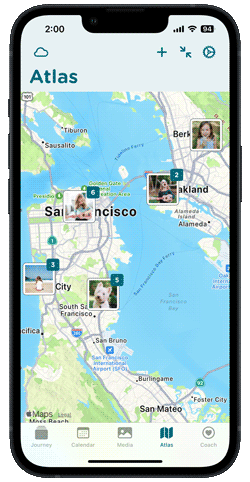
Just like a physical journal, the Journey app provides a space to jot down detailed notes about your travels. It allows you to capture not only the sights and sounds of your adventures, but also emotions and reflections that make the experience truly memorable.
With Journey, you can easily create multimedia entries by adding photos and videos to your journal. This feature enables you to visually document your journey, adding depth and vibrancy to your memories. The app also provides the option to geotag your entries, allowing you to easily organize your experiences by location.
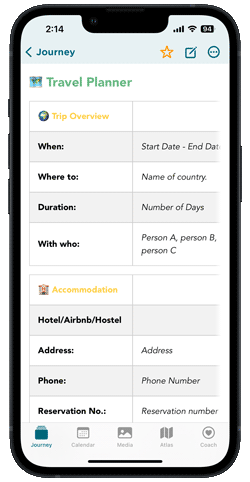
You also don't need to be in the country you will be traveling to in order to start your first journal. A travel journal can be used to plan your upcoming trips as well. Using the journal travel template in Journey, you can add the places you would like to visit, followed by itinerary plans, tours, and more, creating a travel wishlist!
2. Write about your expectations of this vacation
Before you set foot in the first city, you can write about your expectations of the trip in your journal. By listing down your expectations about how the holiday will be, you can heighten your pre-departure excitement and feel as if the vacation has already begun. At the end of your vacation, you can compare the expectations noted in your journal with what you actually experienced during the trip.
3. Write a reflection after your trip
Writing a reflective journal of your travel journey can be useful as it is a great way to recap what you have learned about the people you were with, yourself, and the trip in general. It is something that we advise you to do after a specific event, trip, or activity as it helps you gain insights and apply them to your future vacations.
Travel journal ideas that inspire you
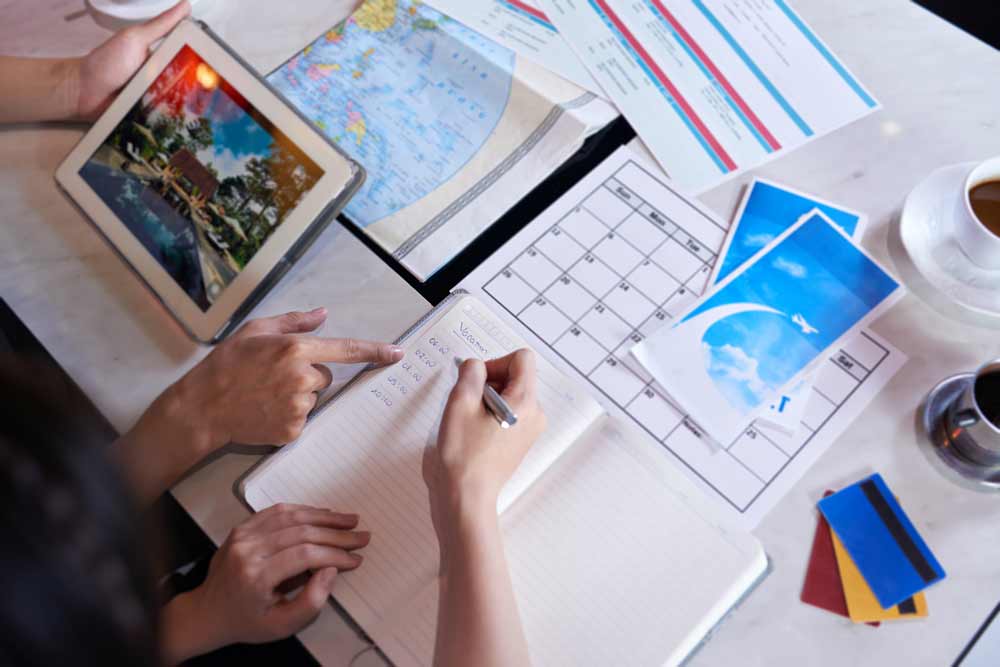
Not sure how to start the first page of your new travel journal? Refer to some of the travel journal prompts to kick-start your first journal of the trip!
Pre-depature ideas
- Why are you going?
- What are the places that you are most excited to visit?
- What are your expectations for the trip?
Post-holiday ideas
- Write about the people that you have interacted with.
- Write about the food.
- What did you like/dislike most about the trip, and why?
- Reflect and write on your experience of the day.
- What is something that you wish to do the next time you visit again?
- How would you recommend the trip to your friends and family? Write a travel guide for them!
- Where’s your next stop that you would like to travel to?
Over 100,000 5-star reviews
Get access to your diary wherever you are – download the free Journey app for your all of your iOS and Android devices today!
Journal Basics
Understand what a journal is, and it's functions
Understand the essence of journal entries.
Your guide to understanding how you can benefit from journaling
Explore the various journal types to serve your needs
Your guide to starting your very own journal today
Journaling prompts to guide you along your reflection
Diary Basics
Your guide to understanding and starting a diary of your own
Record your life with a series of diary entries
Key differences between a diary and a journal
Tips and tricks to start your very own diary today
Your guide to the many diary types you can explore
Discover the benefits of diary and journal software
Get started with your very own digital diary
Simple and effective templates to help you start writing and reflecting
Ideas for Journals
Focus on the positive things in your live.
Write one line a day for the next five years.
A bible journal is one that holds your thoughts and reflections after a religion class and feelings that concerns life.
Record your dreams on a regular basis and keep track of the dream's themes and patterns.
Document your adventures, road trips, places that you have visited, and discoveries that you made along the way.
A self-reflective journal helps you to create your life with intention.
Cultivating inner strength and resilience using stoic journal.
Reignite your relationship, deepen communication, and strengthen your bond.
Write a personalized experience of your pregnancy journey.
Equip yourself with on a journey towards improving your sleep
Managing anxiety through structured journal reflection.
Secure, encrypted and private journaling technology.
Ideas for Diaries
A guide to starting your very own school diary
Keep a log of all your daily meals to ensure a balanced nature diet.
Get motivated, organized and productive by journaling
Private journal secured with a lock for confidentiality.
A guide to starting your health and fitness journey
Streams of consciousness writing done first thing in the morning.
Journal Prompts
Inspiring list of over 100 prompts for enhancing journal creativity.
Prompts to guide reflection and gratitude entries in a daily journal.
Collection of prompts to inspire expressive writing for mental health.
List of 100 self-care journal prompts designed to inspire emotional wellness.
Healing through journaling guidance.
Invigorate your mornings with over 100 thoughtful and inspiring prompts.
Prompts inspire kids to write creatively about diverse topics daily.
Stay calm with 60 journal prompts for anxiety relief.
Explore beginner journaling with daily prompts for reflective writing practice.
Digital Planners
A way to organize your time and your life
Create your own faithful digital planning companion
Find the planner for you
Make every week your best week
Master time management with a productivity planner
A faithful guide on your fitness journey
- [email protected]
COMMERCESTUDYGUIDE
COMMERCE SIMPLIFIED !!!
TOUR DIARY IN PERSONAL SELLING
Tour diary is a document containing information about a salesman visit to various places for selling purpose. Every salesman has to give a detailed account of his visits. The tour diary must include information about the name of the visited place, purpose of the visit, name of the person contacted with, date and time, mode of convenience etc.
A tour diary helps a company informed about movement of a salesperson, their regularity and it also shows their dedication towards work. A salesman consistently visiting various places for qualifying and identifying prospects, gathering information about prospects, giving presentations to the prospects is considered a valuable asset for the company. Tour diary is also helpful in measuring the efforts and performances of a salesman.
यात्रा डायरी एक वाणिज्यिक दस्तावेज है जो विक्रयकर्ता द्वारा विक्रय के कार्य के लिए को विभिन्न स्थानों पर किये गये विजिट का ब्यौरा देता है| प्रत्येक विक्रयकर्ता को अपनी यात्राओं का विस्तृत विवरण कंपनी को देना होता है । यात्रा डायरी में विज़िट की गई जगह के नाम, यात्रा का उद्देश्य, संपर्क करने वाले व्यक्ति का नाम, जाने की तारीख और समय, परिवहन का तरीका आदि की जानकारी संलग्न की जाती है | एक यात्रा डायरी एक कंपनी को विक्रयकर्ता की आवाजाही, नियमितता और काम के प्रति उनके समर्पण को भी दर्शाता है। एक विक्रयकर्ता योग्यता संभाव्य ग्राहक के बारे में पता करने, उनकी की जानकारी इकट्ठा करने , प्रस्तुतियां देने आदि कारणों से लगातार विभिन्न स्थानों का दौरा करता रहता है | अतः हम कह सकते हैं की यात्रा डायरी विक्रयकर्ता के प्रयासों और प्रदर्शनों को मापने में अत्यंत सहायक है |
The proforma of Tour diary looks like this

PERSONAL SELLING AND SALESMANSHIP NOTES IN HINDI
Get in touch with us
Are you sure you want to logout?
Please select your grade.
- Earth and space

How to Write Travel Diary – Practice with Examples
What is a diary entry, and how can we benefit from it.
A diary is a place where you may be honest with yourself, note your observations, and express your feelings regarding events in your life. Additionally, it is a place where you can speak freely, think, and fantasize. Anything you want can easily be written down using words.
Activity Time
It was agreed by you and your sister to commemorate your parents’ 25th wedding anniversary. Your plans should be expressed in no more than 150 words as a diary entry.
Diary entry

____________________________________________________________________________________________________________________________________________________________________________________________________________________________________________________________________________________________________________________________________________________________________________________________________________________________________________________________________________________________________________________________________________________________________________________________________________________________________________________________________________________________________________.
What are Diary Entries and their Types?
A diary entry is a group of pages that make up the entry. The dates and times when the diary entries were written are typically used to organize them. Depending on the diary type, each entry may include thoughts, feelings, reflections, dreams, and more. Even in your diary, you can subcategorize the information in an entry.
- As an illustration, subcategories of a dream diary could include lucid dreams, nightmares, etc.
- Diary entries can be written, illustrated, recorded, or even a combination of several media.
Why Keep a Diary When You Travel?
There are numerous advantages to writing when traveling, but these are a few to get you started.
- Remember More
You won’t forget the reasons you wanted to go and will remember more of your visit if you list the activities you intend to undertake while traveling as well as the activities you have already completed.
You can learn a lot about a new place’s culture, traditions, and people when you visit there. You will notice more of your surroundings if you have a place to record your observations.
- Reflect More
A journal is a location where you can write down new things you’ve learned from exploring the many places you go. You will be able to look back and consider what you have learned and apply it to other areas of your life by having all these fresh discoveries in one location.
Here are a Few Pointers on How to Write a Travel Diary
You must travel and keep a travel diary. You can begin writing wherever you need to. All you need is a location to start your vacation diary.
- Plan Your Vacation Using Your Diary
Even before you go on your trip, you can start keeping a notebook. Start making plans for the things you wish to do in your journal. It could be anything, such as a hip restaurant to eat at, a trek you want to do, or other attractions you want to see. To ensure that you don’t forget anything from your trip checklist, write everything down.
Mention the location you’ve been to above the page
- Use a small diary that you can easily carry along with your travel
- Carry a craft kit, which includes little scissors, pens, plaster, a notepad, stamps, and other supplies.
- Write About How You See it to be
Describe your experiences there.
When you travel, your final location may be completely unanticipated. It’s possible that despite your expectations, the local cuisine surprised you by being excellent.
- Write While Traveling
When information is still fresh in your mind, it is always simpler to recall it. Therefore try to write as frequently every day as you can.
- Add Pictures to Your Diary
In order to have a nice memory of your travels for the rest of your life, you can gather photographs or photos from the places you visit.
You can then add your doodles or postcards to the entries in your journal.
- Write About Your Trip After Your Leave.
You should write about your vacation once you return, just like you do before you go.
- How did it feel?
- What did you discover?
- What caught you off guard?
- What made you unhappy?
To retain new knowledge and use it in future endeavors, it is crucial to reflect on your travels. This is also a fantastic method to discover more about who you are, your possible traveling companions, and your potential for development. Take a step back from what you accomplished and try to grasp the big picture. You might be surprised.
Let’s write the travel diary entry of the place we visited during the last vacation .
You’ve traveled to Miami and visited many places in the city and the city’s scenery and cuisine, and you plan to write about your travels there as well as its location and part of its history, culture, food, and attire. You must compose a minimum of 100 to 150 words.
Let’s practice with a few examples
Make a daily journal of your activities, a scientific notebook of your observations of plants and animals, an art journal of your sketches, a map of the places you visited, or a mix of all four.
Vacation Journal: Day

Related topics

Exploring the World of Adjectives: Types, Usage, and Examples
What are Parts of Speech? Parts of speech determine words’ grammatical and semantic position in a sentence. Activity time The parts of speech are nouns, adverbs, conjunctions, pronouns, interjections, adjectives, articles, prepositions, and verbs. Identify the parts of speech of the underlined words in the following sentences. White- Adjective Big- Adjective Exciting- Adjectives New- […]

Memoir Writing: Basic Elements, Structures, and Types
Memoir: A memoir is a narrative written from an author’s perspective about a particular facet of his/her own life. ‘Memoir’ word comes from the French word ‘memoire’, which means ‘memory’ or ‘reminiscence’. Example Night: Elie Wiesel gives an account of how he survived his teenage years at Auschwitz and Buchenwald concentration camps during World War […]

Identification of Main Idea in Fiction and Non-fiction
Every story or paragraph or non-fictional text has at least one main idea. The MAIN IDEA is what the text is mostly about. (It is backed up or supported by SUPPORTING DETAILS) Before discussing how to find the main idea, we shall first look at TOPIC. Can you define a topic? A topic can be […]

Writing an Article: Structure and Essential Tips
What is an article? Structure of Article Writing : Title : Draw the attention of readers with an attractive title and indicate the main topic of the article Introduction : Attract the reader’s attention with a sentence that gives a general presentation of the topic. Main Body : Between these sentences, the body should do […]

Other topics

How to Find the Area of Rectangle?

How to Solve Right Triangles?

Ways to Simplify Algebraic Expressions

Create your own travel diary online
Explore. create. inspire..
Don't let beautiful memories fade. Create your own travel journal in our software for web, iOS and Android. Create an account and start today!
Tell your story
Easily add stories to your diary in our online editor or app, which have been designed to look like an actual book. Choose from numerous fonts and styles to design your travel diary according to your own taste.
Change the layouts
After adding a text (or several texts), you can continue formatting the diary by choosing different layouts. Place a layout on the desired page and fill the grey areas with photos, maps or other features.
Add photos and maps
A travel journal is not complete without photos and maps! Click on a grey area and add an image, picture or map. You can place pins on the map to indicate certain locations or specify an entire travel route.
Share your diary
You choose which – if any – of your chapters you’d like to share with friends and family. Once you share them, they are automatically converted into an online travel blog that you can share with the world.
Order a beautiful book just with a single click.
- Hardcover & softcover
- 2 sizes: A4 and A5
- (Luxury) matt & high gloss paper
- From 24 up to 298 pages
What our customers say
Beautiful editor.
A lovely way to share my travel stories with those who stay at home. But I especially like that I can also have my own booklet made!
Easy to use
The application is very accessible to anyone and the illusion that you are writing in a real diary also works well. I love using Travel Diaries.
Just amazing
I used to create photo books, but now that I have discovered Travel Diaries that is a thing of the past. The combination of text and photos is unique.
Get started right away!
What are you waiting for? Capture your adventures in a digital diary that you can share with friends and family. You can switch between any of your devices anytime. Get started in our online web application.
A Little Journal… These Digital Travel Diary Apps Are Worth Your Time
Last updated on January 4, 2024 by Shannon
As travel enthusiasts, we yearn to capture the essence of extraordinary travel moments and freeze them in time. We even want those mundane details preserved—what was the name of that hilarious taxi driver who shuttled you from the airport to your guesthouse?
If you’ve logged those details in a travel journal, you don’t have to remember—that’s where travel journaling apps come in, offering a digital travel scrapbook that easily documents even the craziest travel adventures.
I’ve been traveling the world for 15 years, writing, photographing, and sharing my travel stories from the first day. That means I have pretty high expectations when it comes to using digital travel diaries meant to preserve the memories of your expeditions. Here’s what you need to know about the best online travel journal apps available.
Table of Contents
What are Digital Travel Diaries?
While journaling about your travels via a paper notebook used to be called a travel log, the more modern equivalent is an online travel journaling app. That said, even diary app is just a new way to log the most important moments of your travels—and the mundane ones too.
Travel journals essential just document your experiences, capturing your memories as you travel the world. By logging your travel memories in real time via a journaling app, you ensure the smaller details are captured.
Was it a torrential downpour on the day you had booked an “any-weather” tour of the Norwegian fjords? Log that and then share how you felt at that very moment, otherwise the details fade with time.
That’s the real magic of keeping a travel log in any form, a beloved notebook, an app, or a blog. I’ve used all three over my 15+ years of travel. This travel blog was my primary travel log, but at times I’ve used these travel apps to capture moments more immediately.
And no matter my online travel journal app of choice, I always, always have a small physical journal. Even if you diligently record all of the best moments of your trip in your digital travel diary app, you should also carry a small travel journal that acts as your travel log—you use it to jot down funny off-the-cuff moments, or even just mundane details.
Perhaps you press between the pages ticket stubs, a pretty flower from your world wanders, and other small memorabilia that can’t be captured in a journaling app. It becomes a place to log currency conversions you can surreptitiously glance at when haggling at a market, or jot down lists and travel plans.
I never travel without a pocket Field Notes waterproof notebook and this Moleskine travel journal —its these two things that have allowed me to share such rich details on this blog, my personal travel log that’s been running 15 years and counting.
How to Choose an Online Travel Journal App

Travel journal apps are not one-size-fits-all. The best apps offer the exact range of features you need and at a price point you can afford—which can mean free! Many journaling apps offer a free version that may just meet your needs. Often its the more sophisticated features that require a paid upgrade.
Given that you’re probably snowed under travel planning, don’t waste your time downloading every travel diary app here. To pick the right app for your travels, consider these things before you download it:
When choosing an online travel diary app, there are several factors to consider that can help you find the one that best fits your needs. Here are some tips to help you make a decision:
- Features : Review what the journaling app actually does—what are the key features these app developers believe are the hallmarks of their app? That will tell you a lot about functionality. Standard features of most digital travel diaries include: text entry, photo and video uploading, geotagging, and weather data. Decide which features are important to you and ensure that the app provides them. Maybe you want an awesome map interface because you’re hopscotching around the world for a year ? Or you’re studying abroad you might want an app with more functionality around text and photo entries.
- Platform Compatibility : Check if the digital journaling app is available on your preferred platforms, such as iOS, Android, web-based, and desktop. If you’re bringing both a smartphone and laptop on your travels , you may wan a travel diary app that seamlessly switches between the two devices.
- Syncing and Backup : Consider whether the app offers syncing and backup options—and if those are free or paid features. You want access your travel diary across multiple devices, and you want it securely backed up to the cloud.
- Export and Sharing Options : If you plan to share your travel diary with others or would like to have a backup of your entries outside of the app, check if it offers export options, such as PDF or other file formats.
- Company Story : If the travel journaling app you’re considering using hasn’t been around for at least two-to-five years, run in the other direction. Companies, especially app makers, fold quickly. The last thing you want is an email saying you have a matter of days to download your cherished memories before they’re all deleted.
Best Travel Journaling Apps
Day One tops most of these lists because it’s actually that good—and it’s been around since 2011, so you know your travel memories are safe with this online diary app. The company has invested in a high-quality product, and updates over the years have responded to user reviews and feedback—which is enthusiastic across the board.
Its clean interface and seamless integration with iOS (both iPhones and Macs) and Android make it a joy to use. You can effortlessly capture each destination through text and photos, while popping in location data too.
Best app features : The “On This Day” functionality is neat because it doesn’t pull in the best of anything, but rather that exact moment years ago when you were on an incredible adventure out there in the world—or maybe you had logged a tasty hot chocolate at a hipster spot near that landmark you were visiting.
Either way, you’ll be transported back there in an instant and that app feature is maybe one of the strongest motivators to journal about all the big (and small) things that happen as you travel.
Cost : The free version is enough to see if you like it, but if you’re using this as your main digital travel journal then the one photo per entry restriction on free plans isn’t going to cut it. Premium is affordable though, at just under $3 per month, which buys you unlimited photos, videos, audio, drawings, and more.
If you go all in on Journey as your travel journal app, it will become your trusted companion. Rather than being a journaling app that’s great for travel, this travel-centric journaling app goes above and beyond with its extensive features.
Geotagging allows you to pinpoint the exact location of you experiences, while the inclusion of weather data and “mood” status adds depth to entries. You can import photos from your camera roll directly into journal entires, creating vivid visual narratives of your travels.
This robust app works on iOS devices and Android phones, Mac or Windows computers, and there’s even a web app! Basically, it’s an accessible and essential tool for any travel writer seeking to document their adventures with style and precision. Not only because of the features, but also because it allows multi-media exports in PDF or doc format.
It’s also a bit cheeky and has a handy guide to what Journey offers versus Day One or Daylio .
Best app features : Stand out for many will be the features that let you automatically sync and import social media content from Instagram and the like—what a time saver! And the full text editing screen is nice—you can bold, bullet, color, or link to anything you’d like right inside the text. Surprisingly, that’s not in every diary journaling app.
But one of the neater travel-focused elements are the three views for your journal—media (where you scroll by photos), map (which shows your entries pinpointed on a map of the world) and calendar (journals organized by date).
Cost : Unlike essentially all competitors, Journey offers a one time purchase license—currently $18. You can buy a membership for ~$4.20.
Daylio , billed as a “simple micro-diary app,” adds an interesting twist to a travel journaling routine. As a mood and activity tracker, it enables you to record daily experiences and emotions with ease—and without writing anything. It’s an interesting way to to reflect on how your travel adventures have impacted your overall well-being .
It’s not for the hardcore travel writer, but rather, Daylio captures the essence of the travel experiences in a uniquely personal way. It’s a good companion for those seeking to intertwine their emotional journey with their physical travels. And for those who want a more streamlined diary app with fewer features and just straight to the meat of what you want to do.
Best app features : This app is dead simple to use and can be updated in under a minute thanks to the tap interface. It’s certainly not going to be the only way you record you travels, but if you’re already planning to share extensively on a Facebook or Instagram page , then this ease of use may just ensure that you use it every day.
Cost : You could get pretty far with the free version, or upgrade for just $3 per month—only the premium version supports exporting to PDF.
4. Evernote
Real talk: The digital travel journal of your dreams may be something you’re already using. When it comes to versatile note-taking, Evernote reigns supreme. Its functionality goes beyond simple journaling, allowing the creation of multimedia-rich entries.
I’ve organized my entire life via Evernote—travel pans, stories, etc—and its robust features make a compelling case for this being one of the best journaling apps out there, period. Not just in travel, but in general.
As one of the best digital diary apps, you can update it seamlessly across iOS, Android, Mac, and Windows.
Best app features : Well, you could use Evernote to basically plan and execute your trip, in addition to using it as a digital journal. You can also stay ruthlessly organized.
Cost : The free version offers 60 MB monthly uploads, which is constraining for travelers looking for an online app where they could add photos and videos to Evernote itself—this would like be better if you’re embedding YouTube videos, for example, versus storing them in Evernote.
The Personal version offers a more reasonable 10 GB in monthly uploads, but costs $11/month for that perk. If you’re already paying for Evernote for other reasons then this could be an excellent online travel journal, otherwise some of the other ones are likely better priced for a traveler.
5. Travel Diaries
For those seeking a dedicated travel journaling app, Travel Diaries hits the mark. It’s really a truly solid option. As a travel writer, I’m captivated by its interactive features. You can easily create immersive travelogues, complete with photos, maps, and annotations.
It’s also a captivating way to showcase your journey to fellow travelers (and your family and friends back home, of course!). The ability to share your travel stories and explore others’ adventures on the platform adds a sense of community not available in the other digital travel journaling apps.
It’s available as software for web, iOS and Android, but will only work with an internet connection (either cell data or wifi)—which means this might not be the best journaling app for those going far off-the-beaten path .
Best app features : A broad range of fonts and styles allow you to design your travel diary according to your own taste, and your travel log can include itineraries, travel photos, and a traveling map. The layout as an actual travel journal is a fun and personal touch that makes it feel like your digital diary is just as capable of creativity as a blank page in front of you.
Cost : There is no free version of Travel Diaries—it’ll be a subscription for as long as you want access to your travel journal. The basic plan costs $1 a month and includes unlimited storage and is really all most travelers will need for a robust travel journal. If you want to export your stories to PDF, you’ll have to upgrade to $3 per month.
Diaro App is a reliable companion for millions of people, not just globetrotters. This comprehensive diary app offers an array of features that elevate a travel journaling experience. Sometimes the best travel journal is, well, just a great online diary that you happen to use to document your travels.
The ability to add text, photos, tags, and organize entries into folders keeps this app well-organized—you can effortlessly find specific memories or delve into specific themes from your trips. It has a map of entry locations, which is especially important for those using this as a travel journal diary.
Diaro’s sleek interface and user-friendly design make the process of documenting adventures a true pleasure. Available on web, iOS or Android devices (with cross-device syncing via Dropbox) Diaro is a go-to app for travelers who want to capture the essence of their trip with elegance and efficiency.
Best app features : The multilingual UI (30+languages) may be a real boon for those for whom English is not their native language, but the shining standout features is just how easy it is to create a robust diary accounting for all of the key moments on your trip.
Cost : The free version has robust functionality. Upgrading to Diario Pro costs $10 per month and offers more customizability.
7. Polarsteps
Polarsteps is a great travel journal app that offers automatic tracking of your journey, making it effortless to document and share your trips. With its GPS technology, the app traces your route in real-time, creating a visually appealing map of your adventure without requiring any manual input.
This feature sets Polarsteps apart from other travel journal apps, as it eliminates the need for constant updates and allows you to focus on enjoying your trip while the app takes care of recording your route—and uses minimal data and power to do so.
What truly makes Polarsteps unique is its ability to create a beautifully presented travel log that showcases your journey. This app is made for the travel photographers out there also wanting a digital travel log of their journey.
Along with the automatic tracking, the app allows you to add photos, captions, and personal insights to your entries. These elements are then combined to create a visually stunning travel journal that can be shared with friends, family, and fellow travelers. I think this is one of the prettier apps—the maps alone are just a step up from the others.
Best app features : The GPS tracking is easily the standout here. You’ll know the precise spot you took a photo, and can then include a quick note—an inside joke you shared with a friend while there, a tidbit about the day, and more. This kind of precise location data is invaluable in the months and years after you travel.
Cost : It’s free! Polarsteps offers you a printed travel journal of your trip, which is how it’s monetized.
8. Waffle Journal
Waffle Journal stands out from the rest as a a collaborative journaling app that allows you to document and share your travel experiences with others—probably those on your same trip. Its unique approach fosters collaboration, allowing friends, family, or fellow travelers to contribute to your journal. With the ability to add stories, photos, and memories, everyone can create a collective travel diary that captures the essence of your adventures.
The app goes beyond traditional journaling by integrating multimedia elements. You can include photos, videos, and audio recordings. It’s not a travel journal specifically, so you’re not going to have any of those map features the travel apps have integrated into the experience, but it could be a great option for those travel in a group, or a group of friends who just love to share their travel adventures with each other. Social sharing features make it easy to showcase your travel adventures on social media platforms or via email.
BONUS: RIP: Bonjournal
Bonjournal captured my attention many years ago for its visually stunning approach to travel journaling. As you penned your travel stories, this app transformed them into beautifully presented narratives—and it made you choose just one photo to represent your day. Which was really quite neat.
This travel journal app is no longer available! Even though other websites are still recommending it as a travel diary app, the gorgeous app that debuted more than a decade ago is no longer up and running. Instead, a new app with the same name launched in 2021—it’s not a viable alternative. This new Bon Journal diary app is glitchy and poorly rated—storing your cherished travel memories there is not a good idea.
Don’t forget a paper journal as well.
This Moleskin travel journal is well made and worth the space it will take up in your bag. There will be times you just want to put pen to paper—you’ll be glad you have an analog record of your travels too.
How to Safely Store Travel Photos and Videos

These travel journaling apps are a terrific way to document your journey for personal memories, and to share with others. Although some long-term travelers create a travel blog to record their trips, using a travel diary instead is a great alternative.
You get amazing functionality and the ability to share your travel stories without the hassle of running a blog—which can get pricey and generally lacks the ability to share some stories privately with family, or keep other journal entries entirely private.
One thing all of these apps have are general constraints on how you upload, store, and present your travel photos and videos. Although some of these apps offer paid subscriptions with unlimited uploads, you’re likely safer if you store your actual travel photos elsewhere, too. Here’s a quick review of other places you can store travel photos, and the perks of using them in addition to, or instead of, a travel diary app.
- Facebook pages : Rather than use your personal profile, consider setting up a Facebook page for your trip—then you can share unlimited stories, photos, and videos. And you’re creating and sharing in a place where it’s likely your family and friends are already hanging out.
- Instagram : This is a great way to share photos, but videos and stories are a little more constrained on this platform. This might be a good option in addition to a digital travel diary.
- SmugMug : If you need a place to both store and display all of your travel photos, SmugMug is a great option. I’ve had an annual plan for more than a decade and it offers unlimited storage for all of my photos from all over the world for $88 per year. And it’s totally customizable—you can create gorgeous albums on a custom domain name if you own one.
- Google Drive : If you just need a backup solution without the need to share then Google Drive is a good option (I find Google Photos a chore to use). It’s just $2 a month for 100GB of cloud storage.
Ready for some travel inspiration? These are the best travel stories of travelers to follow now, inspiring books from historic travels, and short reads, too.
Essential Travel Planning Resources
❗ Yes, you need travel insurance . IMG Global is the travel insurance I’ve used for well over a decade of traveling solo, and with kids. Here’s why .
🧳 Smart packing can save your trip. Shop my favorite travel gear , including all of the packing essentials for world travel , gear to keep you safe on the road, my favorite travel books , and more.
🛏️ Find great accommodation . Booking.com is essentially the only hotel booking site that I use. It has a wide and affordable selection of traditional hotels, but also hostels and vacation rentals, too. Use these pro tips to find the best travel accommodation .
📍 Navigate more effectively. Rome2Rio is super handy to assess the full range of transport options between two cities—shows everything from flights to trains, buses, minibuses, and more. If you’re booking a rental car, I’ve always found the best deals on RentalCars.com .
✈️ Book affordable flights. Expedia is one of the first places I look for low-cost flights .
☕ Peruse all of my tips for round the world travel , or learn how to move and live abroad .
Get the magazine!

“Pulling Pork and Cranking Hogs”: On the Road With Mannequin Pussy
April 26, 2024.
“I’m really enjoying looking very sweet and angelic while screaming in people’s faces for 45 minutes.”

“Pray, Smoke, Take a Shot”: Anycia Takes Us Backstage at Her NYC Show
April 12, 2024.
The Atlanta rapper called us from the hair-braiding salon to talk about falling in love with New York City on tour and tell us her backstage tequila of choice.

Flyana Boss Takes Us BTS of Their First Headlining Tour
April 3, 2024.
In this week’s Tour Diary, Bobbi and Folayan called us from San Francisco to talk about self-care on the road and being chronically online.

Bad Gyal Takes Us From Her Dressing Room to the Afters
March 12, 2024.
“Usually I go party,” the Spanish singer says of her post-show routine. “I start smoking my cigarettes and drinking all the champagne.”

“I’m Normal as Fuck”: Ekkstacy Takes Us Inside His Worldwide Tour
March 8, 2024.
“I want to be more of a human on stage,” says the Canadian singer-songwriter. “I don’t want people to think that I’m some stuck-up kid.”

“The Vibes Are Incredibly Strange”: On the Road With the Boys of Militarie Gun
March 5, 2024.
In this week’s Tour Diary, Ian Shelton, William Acuña, and Waylon Trim called us from the slopes at Elk Mountain to talk pre-show tequila and aux chord policy.

Zumi Rosow of The Black Lips Wants You to Free Your Ass
January 5, 2024.
“My ass is out all the time.”

21 Savage Brings Interview to His Homecoming in London
December 20, 2023.
“The vibe was unreal.”

The Boys of Kneecap Just Want to Have a Wank
November 27, 2023.
“Big, massive cojones.”

Poppy on Corsets, Capricorns, and Kitten Heels
November 20, 2023.
“I have a lot of vocal syrups and lozenges.”

Alice Glass Is Not Afraid to Punch You in the Face
November 7, 2023.
“I just don’t really feel like crowd-surfing.”

Kim Petras on Tour Life, Dante’s Inferno, and Truck Stop Dick
November 1, 2023.
“There’s definitely gay sex happening, which is lit.”

Audrey Nuna on Procrastination, Subway Piss, and Pre-Show Rituals
October 27, 2023.
“I would say it’s futuristic grandparent elderly pre-professional skate wear.”

Meet Estevie, the Gen-Z Hitmaker Leading a Cumbia Renaissance
October 19, 2023.
“I’ve lived a life that not a lot of people get the opportunity to live.”

The Boys of LANY Choose Between L.A. and New York
September 22, 2023.
“Some protein bars, some peen– which is peanut butter–some avocado, some Greek yog, some Coke Z.”

Post-Punk Band cumgirl8 on Hobby Horses and Signing Sourdough
September 5, 2023.
“She rode the fuck out of that horse.”

Indie Darling Samia Brings Her Whiskey Ritual to Outside Lands
August 18, 2023.
“I’ve been doing this Wim Hof breathing exercise where you breathe in and out really ferociously a bunch of times.”

“A Long Foreplay With a Quick Nut”: Cakes da Killa Takes Us to Whole Festival
August 9, 2023.
“It’s just a whole lot of hedonistic behavior.”

Ava Max Talks Bangers and Barbie With Her Biggest Fan
June 13, 2023.
“It’s just non-stop singing. I don’t think I’ve ever done this much singing ever before.”

On The Road With Country Girls Wednesday and Waxahatchee
June 2, 2023.
“Like, this isn’t TMZ. We’re making indie music.”

Diary writing: Format, Topics, and Examples

Diary Writing has stood the test of time and remains valuable for students or individuals, appearing at the Exams, or seeking a personal and reflective outlet.
In this article, we will explore the profound benefits of diary writing along with the art of diary writing, exploring its format, and various topics, and providing real-life examples.
What is Diary Writing?
Definition and purpose.
At its core, Diary writing is a short essay that regularly records a writer’s own thoughts, experiences, emotions, observations, feelings, and attitudes of his or her daily activities on a book or pad containing pages.
The purpose of this practice varies from person to person, but common motivations include self-expression, emotional release, and self-discovery.
Benefits of Diary Writing
Diary writing offers a multitude of benefits for the mind, heart, and soul. It provides a therapeutic outlet, enhances self-awareness, and fosters personal growth.
By putting emotions into words, individuals can gain clarity on their thoughts and feelings, leading to a greater understanding of themselves and their experiences.
Writing Techniques and Styles
Expressive writing.
Expressive writing involves pouring raw emotions onto the page without inhibition. It’s an opportunity to let go of pent-up feelings, which can be highly cathartic and healing.
Reflective Writing
Reflective writing encourages introspection and analysis. Writers can explore their experiences and reactions to gain deeper insights into their lives.
Creative Writing
For those with a flair for imagination, creative writing within the context of diary entries adds an artistic touch to
the process. Fictional diaries and storytelling can be a fascinating approach to diary writing.
Keeping Consistency in Diary Writing
Commitment and dedication.
Maintaining a diary requires commitment. Even on days when motivation is low, sticking to the routine can lead to long-term benefits.
Finding Motivation
To stay motivated, writers can remind themselves of the positive impact diary writing has on their well-being and personal growth.
General Guidelines for Diary Writing
Certainly! When it comes to diary writing, there are no strict rules as it is a personal form of expression. However, there are some general guidelines that you may find helpful to make your diary writing experience more enjoyable and meaningful:
Be Honest and Authentic: Your diary is a private space where you can be yourself without any judgment. Write honestly about your thoughts, emotions, and experiences.
Write Regularly: Try to write in your diary regularly, whether it’s daily, weekly, or at whatever frequency suits you best. Consistency will help you develop a habit and make it easier to express yourself.
Choose Your Style: Your diary is for your eyes only, so you can write in any style that feels comfortable to you. You can use complete sentences, bullet points, or even doodles and sketches if that helps convey your feelings.
Include Date and Time: Start each entry with the date and, optionally, the time. This helps you keep track of your thoughts chronologically.
Reflect on the Day: Reflect on your experiences, interactions, and feelings about the day. This helps you gain insights into yourself and your life.
Explore Emotions: Express both positive and negative emotions. Writing about your feelings can be therapeutic.
Describe Events: Include details about events, people, and places to create a vivid picture of your experiences.
Set Goals and Aspirations: Use your diary to jot down your goals, aspirations, and plans for the future.
Celebrate Achievements: It boosts your confidence and reminds you of your progress.
Use Prompts: If you’re unsure where to start, use writing prompts or topics to inspire your diary entries.
Be Patient with Yourself: It’s okay if you miss a day or two of writing. Be kind to yourself and pick up where you left off when you’re ready.
Read Old Entries: Occasionally, go back and read your past diary entries. It can be insightful to see how you’ve grown and changed over time.
Enjoy the Process: Most importantly, enjoy the process of diary writing. It’s a wonderful way to connect with yourself and your emotions.
Remember, there are no hard and fast rules in diary writing . The purpose is to create a personal space where you can freely express yourself and reflect on your experiences. Happy diary writing!
Diary Writing Format
Here’s a standard format for writing a diary entry in English:
Date: [ Today’s Date ]
Dear Diary,
[ Start your entry here. ]
[ Write about your thoughts , feelings, and experiences from the day. You can include the events that happened, the people you met, your reactions to certain situations, and anything else that made an impact on you.]
[ Share your emotions honestly , whether it’s happiness, sadness, excitement, frustration, or any other feelings you experienced during the day.]
[ Reflect on any significant moments or lessons you learned today.]
[ You can also write about your plans for the future or your goals and aspirations.]
[ Close your entry with a summary of your overall feelings about the day.]
Goodnight, Diary. See you tomorrow!
[ Your Name ]
Remember, a diary is a personal space for you to express yourself freely, so feel free to write as much or as little as you want. There’s no right or wrong way to keep a diary – it’s all about recording your thoughts and feelings honestly and authentically. Happy writing!
Look at the Sample Diary Writing:
Monday, 7th January 2022 (1) Day & Date
8:00 p.m. (2 ) Time
Dear Diary, (3) Greetings
It is the start of the week. I am so excited. I am going to spend the entire week with my cousin Alok. Today we went to the Flower Exhibition. It was very interesting, Alok had suggested the idea of going to the exhibition It was an annual exhibition for professionals in floriculture and landscape design. It was a comprehensive business platform covering all sectors of floriculture and flower business. The exhibition displayed a wide variety of exotic flowers. It also exhibited various flower species including hybrids. It was one of the country’s greatest flower shows including events like the Summer Garden Competition, Foliage Plants Show, Home Growing Competition, etc. The vibrant colors were totally out of this world. I look forward to attending more of such exhibitions ]—(4) Body
Soumi—– (5) Name of the Writer
You may like to read
Diary Writing Topics
The topics for your diary entries are limitless. They can be based on your experiences, aspirations, emotions, and thoughts. Feel free to modify or combine these topics to suit your personal preferences and writing style. Here are some diary-writing topics that you can explore:
A Memorable Day: Write about a day that stood out to you, whether it was due to a special event, an unexpected encounter, or an achievement.
My Goals and Aspirations: Reflect on your short-term and long-term goals, and how you plan to achieve them.
Dear Future Me: Write a letter to your future self, discussing your hopes, dreams, and expectations.
A Place I Love: Describe a place that holds sentimental value to you, and explain why it’s significant in your life.
My Favorite Hobby: Share your passion for a hobby or activity that brings you joy and fulfillment.
A Book/Movie That Inspired Me: Write about a book or movie that had a profound impact on your thoughts or emotions.
My Proudest Moment: Describe a moment in your life when you felt exceptionally proud of yourself or someone else.
Overcoming Challenges: Discuss a difficult situation or challenge you faced and how you managed to overcome it.
Random Acts of Kindness: Write about an act of kindness you either received or witnessed and how it made you feel.
Things I’m Grateful For: List the things, people, or experiences you feel grateful for in your life.
Dreams and Fantasies: Share any dreams or fantasies you’ve had lately, no matter how extravagant or simple they may be.
A Letter to a Friend/Family Member: Write a letter to someone close to you, expressing your thoughts and emotions.
Favorite Quotes: Share some of your favorite quotes and explain why they resonate with you.
Life Lessons: Reflect on valuable lessons you’ve learned throughout your life.
An Adventure I Want to Experience: Describe an adventure or journey you wish to embark on in the future.
The Best Day with Friends: Write about a day spent with your closest friends and the fun and memorable moments you shared.
My Dream Vacation: Describe your dream vacation destination and everything you would like to do and see there.
A Time I Overcame Fear: Reflect on a time when you faced a fear or phobia and how you managed to conquer it.
My Role Model: Write about someone you look up to and admire, explaining what makes them your role model.
A New Skill I Want to Learn: Discuss a skill or talent you’ve been eager to develop and why it interests you.
The Power of Music: Share how music impacts your emotions and recount a song or piece that has significant meaning to you.
A Lesson from Nature: Write about a valuable lesson you learned from observing nature or spending time outdoors.
An Act of Generosity: Describe an act of generosity you carried out for someone else and how it made you feel.
Challenges of Growing Up: Reflect on the challenges and changes you’ve faced as you’ve grown older.
A Delicious Recipe: Share a recipe that you recently discovered or tried, and describe how it turned out.
The Most Unforgettable Dream: Write about a particularly vivid or memorable dream you had and its impact on you.
If I Could Time Travel: Imagine if you could travel to any period in history or the future; where would you go and why?
To Your Younger Self: Write a letter of advice and encouragement to your younger self.
The Joy of Giving: Describe the happiness you felt when giving a thoughtful gift to someone special.
A Day Without Technology: Imagine spending a day without any technology and write about how it affected your day.
Workout Diary Writing Examples for Practice:
(1) write a diary entry about how you helped an old woman who was traveling by herself on the bus..
Tuesday,8 th January 2022
Since my cousin was hospitalized, I decided to visit him. I took a bus at 8 o’clock which was very crowded because of the office hours. People were standing close to each other, and some were also hanging from the exit door as there was no space inside the bus. Even the senior citizens were standing as their seats were occupied by youngsters. There was an old lady who seemed to be sick, because of the heat and suffocation. I asked a young boy to stand up to provide her the seat. After sitting she drank some water and felt comfortable. Then, I helped her to get down from the bus. She thanked me and blessed me. I felt very happy that I had done some good deed.
(2)Today, you witnessed some students littering the corridors and fields of your school. You were very disappointed at that sight. Make a diary entry about how you felt.
Tuesday, 31st March 2021
I am very sad today. During the recess time, I saw a group of students littering in the school premises. They littered the corridors with plastic bags, foils, wrappers, etc. It was a very disappointing sight. I told them repeatedly not to litter and use the dustbin, but they did not listen to me. Not just this, even the playing field behind the classrooms was not spared by them. It looked no less than a garbage dump. I fail to understand how anyone can be so ignorant about his actions and its consequences. Sometimes, I feel disgusted that our environment has to suffer because of our bad habits.
I wish I could do something about it but my plan is to drop a letter in the suggestion box for the appointment of prefects to keep a check and ensure a clean environment at school. I hope things will get better due to my suggestions.
(3) Y ou recently participated in the ‘All India CBSE National Quiz Competition and reached the finals. The final round was telecast over the national channel where you and your team won the quiz Describe your feelings in 100-150 words through a diary entry.
Saturday, January 23 rd , 2022
Today was such an exciting day. You know what, my team won the first prize the in ‘All India CBSE National Quiz Competition’. Not only this, but the cherry on the cake was also that the final round was telecast over the national channel. My parents were very happy and so were my teachers and friends. The quiz was on biodiversity. The preliminary rounds were not so easy. But I had very wise team members. We were the leading team in oral round as well. It was so much fun – with applause and praises. We had a cutthroat competition with two of the other schools but we came first which was unexpected, I was very elated. We received a trophy and a certificate. It was a very proud moment of my life.
(4) Suppose recently you had to change your place of residence. Write a page in your diary about the experience of shifting from a familiar neighborhood to a new place.
Saturday, 10 th September 2021
My father has bought a new flat in Jamshedpur. He sold the village house at Murshidabad for his job transfer. It was really disappointing when I heard that we would go to a new residence. I had to leave my village school, my teachers, my friends, my neighbours, and the happy moments spent in the nature’s lap. The sight of vast green fields and catching fishes in the pond kept flickering in my mind. I was then admitted to a new school in Jamshedpur. All the memories I left there made me sad all the time. Here the children are not so friendly with me as I have come from a rural area. I go to the rooftop to enjoy the cloudlets floating in the sky. Hence every time I recall my good old days and I sob silently.
(5) Today while coming back from school, you saw a small child begging at the signal. You were heartbroken to see the future of the country in such a dismal state. Make a diary entry in not more than 150-200 words expressing your feelings.
Saturday, 16th February 2021
I am feeling heartbroken today. While I was coming back from school, our bus stopped at a traffic signal. There I saw a young boy who was hardly eight years old begging for food and money. He knocked at every car and pleaded for money but was chased away most of the times I felt very sad on seeing that the child who should have been going to school to study had to struggle every day to fill his empty stomach. Al the same time I realised the value of all the comforts that my parents have provided to me. I realised that some steps should be taken to improve the conditions of these child beggars. When ! grow up. I will definitely do something for them.
(6) Make an entry in your diary in 100-150 words on your hesitation to speak in English and you wish to improve your English-speaking skills.
Tuesday, March 07, 2017
A person is known by his company, what type of friends he has and how he reacts before them. I am fortunate enough to have a good circle of friends. They are extremely helpful and good-natured people but sometimes I feel quite embarrassed because they all have a good command over English while I do not, I have done my schooling from a Telugu medium school. Therefore, I hesitate to speak in English before them. It is my heartfelt desire to improve my English-speaking skills but there is no good institute in my vicinity where I can improve my speaking skills. Therefore, my desire has not yet been fulfilled. Dear Diary! I promise you that I will improve my English-speaking skills very soon.
(7) You feel that speaking in English is the need of the hour. As your parents are unable to do so, you feel a keen desire to teach them. Write in about 100-150 words a page in your diary expressing how you will execute it.
Monday, Dec 15, 2021
These days, speaking in English has become the need of the hour. Nobody can deny this fact. Even my parents also agree with it. But they are unable to do so. Though it is not their fault or any weakness for which they should feel shy in the modern world, yet I have a keen desire to teach them to speak in English. This language is a link with the outer world as it is an international language-a handy means of communication with the people around the world. I shall help them in this so that they will feel more confident. First, I’ll give them lessons in Grammar, then shall proceed to introductory dialogue speaking and will gradually move to small speeches on the topics of their interest. I am sure my parents will be at the earliest, able to talk and express in English independently.
(8) Suppose You participated in a play at the National School of Drama. It was recorded and will be telecast next week. Make a diary entry using the following clues in 150-200 words sharing your experience.
Wednesday, 12th April 2020
I am very happy to share this wonderful experience with you. I had been practising day in and day out for the play participated in. Today was the final show. By the grace of God, everything went on well, I felt content when everyone praised our acting. I felt very lucky to have learnt controlled acting from such great and senior actors. Although I was quite nervous working with such experienced artists, they made me feel comfortable. The rehearsals were of sheer fun as well as a great learning experience. My happiness knew no bounds when we came to know that it will be telecast on the National channel.
I feel so proud about it and I am short of words that would justify my joy. But in short, it was an amazing journey. I am very excited about the telecast and eagerly waiting for it to be shown on TV. Basically, I already feel like a superstar. I hope everyone likes it.
(9) Suppose you are a member of the Eco Club of your school. A few weeks back, your school celebrated Earth Day, Various informative programs were showcased in the morning assembly. Write a diary entry in 150-200 words expressing what you learnt through those activities based on your own ideas.
Friday. Ist May, 2021
A few days ago, my school celebrated the Earth Day on 22nd April, 20XX. Being a member of the Eco Club of my school, I helped in organising the event and making learning experience for all the students at my school on this occasion a special morning assembly was held, and various informative programmes were showcased. We invited eminent speakers from all over the city to sensitise us towards environmental protection Important environmental issues such as global warming pollution, deforestation etc were discussed in detail. All the students pledged to save the environment and spread awareness amongst people about protecting Mother Earth. We also decided to adopt environment friendly activities in our day-to-day life and thus work towards saving the environment. Overall, it was an enriching experience and I hope that my school continues to celebrate more such events.
(10) You have kept a pet at home. Your father brought the pet for you. Write a diary entry describing how you take care of your pet in about 100-120 words. Read the given clues to plan your diary entry:
Wednesday,15 May 2021
My joy knew no bounds when a few days ago I saw my father coming home from office with a white puppy in his hands. I immediately ran towards him and took hold of the puppy. He is a German Spitz, all covered with white and golden coat. I named him Piya. I had never known till now that a pet can be so warm and affectionate. He is very playful and likes to spend his time playing with a ball. I give him milk, curd, chapati and dog food to eat. I take him for a walk twice a day. That is the time which he loves the most the moment I say, ‘Let’s go for a walk’, he starts showing his excitement. These words seem to be magic words.
I sometimes carry him to my friend’s house as they also love to play with him. My father takes him regularly to a vet for his vaccination and routine check-up. I really love my pet. You should watch him dancing when I come back from school. Never have I received such a warm welcome from anyone, the way he welcomes me. I am so happy that I have him as a friend and good company.
Q. 1: Can Diary Writing Help Improve My Mental Health?
Ans: Yes, diary writing can have significant mental health benefits. It provides an outlet for self-expression, reduces stress, and promotes emotional well-being.
Q. 2: How Do I Start a Diary Writing Habit?
Ans: To start a diary writing habit, choose the right diary format, create a consistent writing routine, and write with honesty and authenticity.
Q. 3: What Should I Write About in My Diary?
Ans: You can write about daily activities, emotions, goals, challenges, dreams, and adventures. There are no strict rules – let your diary be a reflection of your life.
Q. 4: Can Diary Writing Spark Creativity?
Ans: Absolutely! Diary writing allows you to explore your creativity through art, sketches, and expressive writing techniques.
Q. 5: Are Digital Diary Writing Apps Secure?
Ans: Most reputable digital diary writing apps offer robust security features to protect your private entries.
Q. 6: How Can Diary Writing Facilitate Personal Development?
Ans: Diary writing helps with personal development by promoting self-reflection, goal setting, and tracking progress over time.
Q. 7. Is diary writing only for young people?
Ans: Diary writing is for everyone, regardless of age. People of all ages can benefit from the therapeutic and self-reflective aspects of journaling.
Q. 8. What if I miss a day of writing in my diary?
Ans: It’s normal to miss a day occasionally. The key is to get back on track and not let a single missed day derail your commitment to diary writing.
Q. 9. Can I include negative emotions in my diary entries?
Ans: Absolutely! Diary writing is a safe space for all emotions, including negative ones. Expressing these emotions can be cathartic and lead to emotional healing.
Q. 10. Should I use a physical diary or a digital one?
Ans: The choice between a physical diary and a digital one depends on personal preference. Both have their merits, so go with the one that feels most comfortable for you.
Q. 11. Can I use diary writing as a form of therapy?
Ans: Yes, diary writing can be therapeutic. It can help individuals cope with anxiety, depression, and other mental health challenges by providing an outlet for emotional expression and self-reflection.
Related Posts:

Bruce Springsteen Documentary About E Street Band World Tour Set at Disney+ and Hulu
By Selome Hailu
Selome Hailu
- ‘Hacks’: Hannah Einbinder and Christina Hendricks Talk Gay Republicans and Their Characters’ ‘Loosey-Goosey Morals in the Bedroom’ 2 days ago
- ‘Young Sheldon’ Series Finale Hits Nearly 9 Million Viewers, Biggest Episode in Four Years 2 days ago
- Nielsen Streaming Top 10: ‘Killing Eve’ Charts After Netflix Debut With Surprising Popularity Among Viewers Age 65+, ‘Fallout’ Breaks Another Record 3 days ago

Disney+ and Hulu have set a new Bruce Springsteen documentary for an October premiere.
“Road Diary: Bruce Springsteen and The E Street Band” will follow the band’s 2023-2024 world tour, featuring footage from band rehearsals and backstage moments, conversations with Springsteen as he develops the setlist and archival clips of the E Street Band. The project is intended to complement Springsteen’s existing body of autobiographical works, which includes the memoir “Born to Run,” the live performance (and documentary) “Springsteen on Broadway,” and the films “Western Stars” and “Letter to You.”
Popular on Variety
The documentary is not the only Springsteen project soon headed to screens. “The Bear” star Jeremy Allen White is in talks to play the legendary rocker in an upcoming biopic titled “Deliver Me From Nowhere,” which will follow the making of the 1982 album “Nebraska.” “Succession” star Jeremy Strong is in talks to play Landau , as Variety exclusively reported, while 20th Century Studios recently boarded as distributor of the Gotham Group-produced film.
UPFRONTS 2024: COMPLETE COVERAGE
More From Our Brands
The most delirious film at cannes a transgender cartel-gangster musical starring selena gomez, patek philippe leads geneva’s spring watch auctions to a frothy $125 million, no a’s in attendance: oakland trails a whopping 553 u.s. teams, the best loofahs and body scrubbers, according to dermatologists, fbi’s katherine renee kane previews finale’s tiffany/hakim face-off: ‘it shocked me when i first read it’, verify it's you, please log in.

Taylor Swift news diary: Singer delights fans with unexpected ‘1989' mashup at 89th Eras Tour performance
W elcome to our daily Taylor Swift news diary, your go-to source for the latest updates and insights into the world of one of today's most influential and celebrated artists.
Delve into Taylor Swift's dynamic career, public appearances, and the buzz within the entertainment industry as we provide you with a bite-sized overview of the happenings in the life of this multi-talented and ever-evolving artist.
Taylor Swift thrills crowd with ‘1989' song mashup surprise at 89th Eras tour concert
Taylor Swift thrilled fans at her 89th Eras Tour show with a surprise mashup of three songs from her '1989 (Taylor's Version)' album. The performance took place at the sold-out Friends Arena in Stockholm, Sweden, on May 18. Swift, wearing an orange dress, played an acoustic medley of 'Welcome to New York', 'Clean', and the vault track 'Say Don't Go' on piano. Fans shared their excitement on social media, with one describing the medley as a "love letter" to her fans, interpreting it as Swift asking her audience to stay with her through her journey. This show marked Swift's return to the stage after a romantic getaway in Lake Como, Italy, with her boyfriend, Travis Kelce.
READ MORE: Taylor Swift Performs Surprise Mashup of Three ‘1989' Songs at 89th Eras Tour Show
Taylor Swift stuns fans with live guitar performance of ‘guilty as sin'
Taylor Swift created a frenzy among fans when she performed 'Guilty as Sin?' live for the first time at her Eras Tour stop in Stockholm, Sweden, on May 18. The show took place at the Friends Arena, where Swift praised the "absolutely wild" crowd before playing the surprise acoustic song from her latest album, 'The Tortured Poets Department'. Swift introduced the song by strumming her guitar and delivering the opening line, much to the audience's delight. Fans, both in the arena and online, expressed their excitement, with many sharing memes and comments about missing the live debut. The song, which features evocative lyrics about longing and unfulfilled desire, was met with enthusiastic approval from the crowd.
READ MORE: Taylor Swift Debuts ‘Guilty as Sin?' Live on Guitar in Stockholm: ‘One of My Favorite Songs' From ‘Tortured Poets'
Travis Kelce discusses Italy trip with Taylor Swift
Travis Kelce, the Kansas City Chiefs tight end, recently shared highlights from his romantic getaway to Italy with his girlfriend Taylor Swift. Speaking to reporters at his Kelce Jam concert in Kansas, Kelce couldn't stop praising the experience, particularly the "unbelievable" food. His favorite dish was a butter ravioli, which he described as "amazing."
Reflecting on their trip to Lake Como, Kelce emphasized the beauty of the location, remarking on the stunning views and delicious cuisine. However, his ultimate highlight was attending Swift's Eras Tour concert in Paris alongside Bradley Cooper and Gigi Hadid. Kelce expressed admiration for Swift's performances, urging others to experience them firsthand.
Although Swift couldn't attend Kelce Jam due to her tour commitments in Stockholm, Sweden, Kelce revealed that she encouraged him to enjoy himself and conveyed her regrets at not being there.
READ MORE: Travis Kelce Shares Favorite Parts of Italy Trip With Taylor Swift
Charissa Thompson makes bold declaration about Travis Kelce and Taylor Swift's relationship
Charissa Thompson, a sportscaster known for her bold takes, recently shared her joy over Travis Kelce's relationship with Taylor Swift. Having suggested the pairing weeks before their romance became public, Thompson expressed her happiness at seeing them together.
Thompson emphasized her long-standing friendship with Kelce, stating that she always wants him to find happiness. She and fellow sportscaster Erin Andrews had previously encouraged Swift to consider dating Kelce during an episode of their podcast last August, praising Kelce's character and fun-loving nature.
Following the podcast episode, Swift and Kelce went public with their relationship, with Swift attending several of Kelce's NFL games, including the Super Bowl LVIII. Thompson's supportive words reflect the positive reception the couple has received from their friends and fans alike.
READ MORE: Sportscaster Charissa Thompson Makes Bold Declaration About Travis Kelce and Taylor Swift
Travis Kelce returns from European trip with Taylor Swift to host Kelce Jam music festival in Kansas City
Travis Kelce, fresh from his European escapade with girlfriend Taylor Swift, made a swift return to Kansas City to host his music festival, Kelce Jam, on Saturday night.
The festival, held at a local amphitheater, featured headliners like Lil Wayne, Diplo, and 2 Chainz. Kelce, who had been accompanying Swift on part of her 'Eras Tour' in Europe, returned just in time for his own event, located about 30 minutes from the Kansas City Chiefs' stadium, Arrowhead Stadium.
Sporting a logo t-shirt, jeans, and a blue bucket hat, Kelce was greeted by enthusiastic fans upon his arrival, with security clearing the way for him through the crowd. Later in the evening, he joined his Chiefs teammate Patrick Mahomes on stage during 2 Chainz's set, adding an extra touch of star power to the event.
READ MORE: Travis Kelce leaves his European trip with girlfriend Taylor Swift to attend his own music festival Kelce Jam back in Kansas City

- Skip to main content
- Keyboard shortcuts for audio player
New concert documentary has behind-the-scenes look at Spingsteen's latest tour
Road Diary: Bruce Springsteen and The E Street Band is coming to Disney+ and Hulu in October. It feature interviews with the musicians as they figure out their performance setlists and other issues.
Copyright © 2024 NPR. All rights reserved. Visit our website terms of use and permissions pages at www.npr.org for further information.
NPR transcripts are created on a rush deadline by an NPR contractor. This text may not be in its final form and may be updated or revised in the future. Accuracy and availability may vary. The authoritative record of NPR’s programming is the audio record.
Louisville's Justin Thomas gets first experience playing hometown major
In 2014, thomas was competing on korn ferry tour.
Change Text Size
Justin Thomas was back home in Kentucky for an occasion different from any other time in Louisville. The city honored him with its “Hometown Hero” award, and a 60-foot banner was unfurled from the building he used to pass on the way to Saint Xavier High School.
Thomas was so choked up at the presentation he couldn’t speak until he eventually said, “The things I’ve felt today, I’ve never felt in any golf tournament I’ve won.”
This was a week before the best golfers in the world — one of them a Louisville native — arrive for the PGA Championship at Valhalla.
It’s rare for a player to have a hometown major in a city that doesn’t have a steady diet of championship golf. Thomas is curious how he will respond. He is a two-time PGA champion, winning at Quail Hollow in 2017 and Southern Hills in 2022, which also was his last victory as he continues to work his way back into form.
“It will be a new experience for me,” Thomas said. “The hardest thing I’ll have is putting pressure on myself and wanting to perform well. But at the same, I do a good job of that without having a home event. Maybe two negatives will equal a positive.”
Collin Morikawa and Max Homa grew up in the L.A. area. The U.S. Open went to Los Angeles Country Club last year, but they are regulars at the PGA TOUR event at Riviera, the next best thing to a major. Xander Schauffele and Charley Hoffman grew up in San Diego. They play Torrey Pines every year on TOUR — the U.S. Open in 2021 wasn’t that much different.
Thomas has talked to Keegan Bradley, a New England native, about what it was like to play the U.S. Open — and contend on the weekend — at Brookline outside Boston in 2022.
“I told him what I tried to do is look into the crowd and make eye contact with people and see how excited they were and try to feed off that,” Bradley said.
His other message: Embrace the moment. This doesn’t happen very often.
“My motto for the week was, ‘Why look forward to something for so long and not enjoy it?” Bradley said.
Tommy Fleetwood would second that notion. Fleetwood grew up in Southport, England, and played The Open at Royal Birkdale in 2017. He opened with a 76 and gamely rallied to make the cut and tie for 27th.
“There’s pressure from yourself because it means that much more. Then there’s pressure of playing before your home crowd,” Fleetwood said. “But I mean, how lucky are you to play a home Open where you grew up?
“It’s so rare you get to do things like that,” he said. “If you don’t embrace it, you’ll look back and wish that you did.”
Justin Thomas reflects on two PGA Championship wins
Thomas also wants to check in with Rory McIlroy about playing an Open in his native Northern Ireland. That didn’t start — or end well — for McIlroy at Royal Portrush. He made a quadruple-bogey 8 on the first hole, shot 79 and his rally to make the cut fell short.
“I remember getting onto the first tee Thursday and feeling overwhelmed, like I hadn’t really prepared for it or visualized it or took my mind to a place where I was expecting to feel what I felt,” McIlroy said. “I don’t know that you can. You can’t prepare for it until you actually feel it.”
The list is short of players dealing with a hometown major.
Jack Nicklaus played the 1964 PGA Championship in his hometown of Columbus, Ohio (12 years before the inaugural Memorial). Columbus Country Club wasn’t his home course, and Nicklaus had only played it four times since high school.
But it was a busy week. Gary Player stayed at his house and Nicklaus jokingly said he missed a Tuesday practice round because he had to do Player’s laundry. Nicklaus, the defending PGA champion, was six behind going into the last round and closed with a 64 to finish three shots behind Bobby Nichols.
Jeff Sluman was the PGA champion when the 1989 U.S. Open went to Oak Hill in Rochester, where Sluman grew up. He agreed to do a daily diary for the Rochester Democrat and Chronicle, right up until he missed the cut.
Thomas has a history at Valhalla, but rarely with a club in his hand.
His father was the head pro at Harmony Landing, and he was an officer with the PGA of America when the PGA Championship came to Valhalla in 2000. Thomas was 7, just getting into golf. He said that week made it clear what he wanted to do for a living.
It helps that it was among the most memorable finishes in PGA Championship history. Tiger Woods birdied the last two holes in regulation to force a playoff with Bob May, and he went on to capture his third consecutive major on his way to the “Tiger Slam,” holding all four majors at the same time.
Thomas was in the clubhouse — too short to see anything with so many people — when Woods made his 6-foot birdie putt to force the playoff. He could hear the roars seconds before he saw the putt go in on TV. He remembers staying late in the clubhouse with hopes of running into Woods. Thomas had to settle for seeing Woods walk down a hallway into a room.
“I’ve watched the VHS of that tournament so many times as a kid,” Thomas said. “I’d get home and if nothing was on TV, I’d watch that over and over and over and over again.”
Thomas recalls going to a clinic on the practice range earlier in the week to see Jack Nicklaus, his final year playing all four majors.
“I went to school telling all my friends, ‘I got an autograph from the best golfer to ever play.’ And they go, ‘Oh, you got Tiger Woods?’ I said, ‘No, I got Jack Nicklaus’ autograph,’” Thomas said. “It was a very typical 7-year-old golf nerd thing to say.”
He wasn’t much different at 15 when he attended the Ryder Cup at Valhalla in 2008. He was there when Jim Furyk’s match clinched a rare victory for the Americans. Another Kentucky native, J.B. Holmes, pulled Thomas inside the ropes where the kid found himself high-fiving with Phil Mickelson.
Thomas missed the 2014 PGA Championship. He was playing a Korn Ferry Tour event in Springfield, Missouri, trying to earn a PGA TOUR card.
Now, finally, he returns to a big stage at Valhalla — this time as a player, not a wide-eyed fan.
Bruce Springsteen and the E Street Band to star in 'Road Diary' on Hulu, Disney+
2 minute read.

What's life like backstage with Bruce Springsteen and the E Street Band?
Find out in “Road Diary: Bruce Springsteen and The E Street Band,” which debuts on Hulu and Disney+ in October. The documentary has “exclusive footage” from E Street's current tour, beginning in January 2023 with rehearsals at the Vogel in the Count Base Center for the Arts in Red Bank. There are also interviews with band members, including Springsteen, and concert footage.
Thom Zimny, a frequent Springsteen collaborator, is the director.
“ 'Road Diary: Bruce Springsteen and The E Street Band' opens a new door to Springsteen’s creative process for fans around the world, sharing fly-on-the-wall footage of band rehearsals and special moments backstage — as well as hearing from Springsteen himself,” states a Hulu/Disney+ release. “These conversations follow Springsteen closely as he develops the story he wants to tell with this tour’s setlist — interspersed with rare archival clips of the E Street Band, underscoring themes of life, loss, mortality and community. In this way, it serves as an essential and never-before-seen chapter in an autobiographical series spanning Springsteen’s memoir 'Born to Run,' 'Springsteen on Broadway,' and the films 'Western Stars' and 'Letter to You.' ”
The tour began Feb. 1, 2023, in Tampa, and was marked by positive critical reviews — and a rash of absences by E Street Band members because of COVID. Steven Van Zandt, Nils Lofgren, Jake Clemons, Soozie Tyrell and Lisa Lowell all missed shows.
Need a break? Play the USA TODAY Daily Crossword Puzzle.
Several shows were also postponed due to an undisclosed illness, and for a Springsteen illness, as stated for two shows at Citizens Bank Ballpark in Philadelphia last August.
After three triumphant shows at MetLife Stadium in East Rutherford (Aug. 30, and Sept. 1 and 3), Springsteen announced the tour was postponed for the rest of the year as he battled peptic ulcer disease.
More: Obituary for Bruce Springsteen mom: Find yourself a little rock 'n' roll bar and dance
More: Freehold delegation visits Ireland while Springsteen playing Cork, Dublin
“The last four shows, I was playing really ill,” said Springsteen March 21 on SiriusXM's E Street Radio with Jim Rotolo. “So that was Foxborough, which was a great show, and the three Meadowlands shows, which were all, really — the band playing at its best and in front of a great New Jersey audience and a great Boston audience. But I was really not well.”
The tour resumed March 19 at the Footprint Center in Phoenix, and its currently in Ireland, where shows are running over three hours.
The exact date for the debut of “Road Diary: Bruce Springsteen and The E Street Band” has not been released yet.
Subscribe to app.com for the latest on the New Jersey music scene.
Chris Jordan, a Jersey Shore native, covers entertainment and features for the USA Today Network New Jersey. Contact him at @chrisfhjordan; [email protected].
site categories
A24 landing u.s. rights deal for two-time palme d’or winner ruben östlund’s next movie ‘the entertainment system is down’, breaking news.
Bruce Springsteen Documentary ‘Road Diary’ Sets Premiere Date At Hulu, Disney+
By Matt Grobar
Matt Grobar
Senior Film Reporter
More Stories By Matt
- Robert Alonzo, Jonathan Spano Partner To Launch Action-Focused Production Company Tremor House
- How Indie Distributor Vertical Went From “VOD Expert” To A Respected Theatrical Player
- Vince Vaughn In Talks To Star In 20th Century’s Buddy Action Pic ‘Mike & Nick & Nick & Alice’

Road Diary: Bruce Springsteen and The E Street Band , a new documentary chronicling Springsteen and company’s prep for their 2023-2024 World Tour, will premiere on Hulu and Disney + in October of this year. An exact launch date is forthcoming.
Related Stories

Andrew McCarthy’s Brat Pack Documentary ‘Brats’ Sets Hulu Premiere Date

‘The Supremes At Earl’s All-You-Can-Eat’ Sets Hulu Premiere Date
Road Diary opens with a look at the band’s earliest rehearsals in Red Bank, New Jersey and follows them through performances for tens of thousands across continents. The doc’s producers are Zimny, Jon Landau, Springsteen, Adrienne Gerard and Sean Stuart.
Bruce Springsteen and The E Street Band capped the first 2024 leg of their world tour in April — a cross-country U.S. run that brought surprise guests, blistering three-hour shows and setlist rarities (totaling 60 different songs through 11 performances). The band is in the midst of playing 25 shows throughout Europe this spring and summer — after last year’s European tour sold 1.6 million tickets — and will return to North America for more dates from August through late November.
Must Read Stories
‘horizon’ review + red carpet as costner hits town; demi moore talk; more.

Will ‘Megalopolis’ Distributors Replicate One Of Movie’s Buzziest Moments?
Season finale with jake gyllenhaal; trump vp cold open; what’s in store for season 50, ‘if’ rises to $34 million+, ‘strangers’ strong, ‘back to black’ goes belly-up.
Subscribe to Deadline Breaking News Alerts and keep your inbox happy.
Read More About:
No comments.
Deadline is a part of Penske Media Corporation. © 2024 Deadline Hollywood, LLC. All Rights Reserved.

COMMENTS
A travel diary is a beautiful way to document and cherish your travel experiences. Whether you opt for a traditional handwritten journal, a photographic account, or a digital platform, the process of journaling will enhance your journey and provide a lasting memory of your adventures. Experiment with different styles, layouts, and prompts to ...
Indeed, this is one of the big no-nos of travel writing! 4. Remember entries don't have to be chronological. Write whatever catches your imagination, whenever it occurs to you. 5. You don't have to record everything! What you leave out is as important as what you put in. 6.
5. Write about the food. Just because you call it your travel diary, doesn't mean it can't double as a food diary. If there are any foods you loved, dishes you hated or recipes you can't live without, write them down to remember them all. Maybe some new fare you tried will influence your tastes when you return home.
Ιt's a fundamental part of life to share knowledge, stories, memories, drinking a couple of beers and reminiscing the old days. This is what the Tour Diary is about. We reach out to people to have them write a story down, and share it with all of you. A funny story from a tour. A memorable meeting at the backstage of a festival.
Try to shoot a combination of landmark shots and informal portraits to give your journal variety. [6] If you're journaling online, such as on a blog, upload a few relevant photos to go with each post and help bring your entry to life. You don't have to print out photos on the road for a physical journal.
Here's a helpful list of 17 travel journals to give you a sense of travel journal examples and possibilities. Mostly, consider if you want to do travel drawing or even painting in your travel journal. If so, you'll want thicker paper that won't warp with the water or bleed through with ink. You likely will want blank pages, as opposed to ...
There are two halves to creating a travel journal. The first half is the part where you explore, observe and investigate. The second half is the part where you write or create. If one half of the formula is missing, you won't have a travel journal at all.
AdventureLog is the best tool to document your tours. On AdventureLog.io you can easily create your own tour diary. For your eyes only or for the whole world - you decide. No advertising, no binding to a manufacturer. You're adventurous and love being outside.
A travel diary (or travel journal - whichever you prefer), is a book in which you can accumulate the beginnings of travel plans, from aspirations to the nitty gritty of budgets, as well as daily logs of good and bad memories once you make your trip. It provides an excellent space to reflect on your journey.
The A party, and more irritatingly, both tour managers, were staying at The Nimb. Go on, Google it. Right in the center of Copenhagen, The Nimb is a boutique hotel combining, "Scandinavian ...
Diary vs Journal. Key differences between a diary and a journal. How to Start and Write a Diary. Tips and tricks to start your very own diary today. Diary Types. Your guide to the many diary types you can explore. Diary Software. Discover the benefits of diary and journal software. Digital Diary Guide. Get started with your very own digital ...
Tour diary is a document containing information about a salesman visit to various places for selling purpose. Every salesman has to give a detailed account of his visits. The tour diary must include information about the name of the visited place, purpose of the visit, name of the person contacted with, date and time, mode of convenience etc.
A diary entry is a group of pages that make up the entry. The dates and times when the diary entries were written are typically used to organize them. Depending on the diary type, each entry may include thoughts, feelings, reflections, dreams, and more. Even in your diary, you can subcategorize the information in an entry.
Enter your Tour Center ID to find a Tour Diary and follow your traveler while on tour! Browse Tours. Destinations; Europe; North America; Northeastern U.S. Latin America; Asia; Africa; South Pacific; ... Tour Center ID (e.g. Smith-1234): Go > 101 Federal Street, Suite 900 Boston, MA 02110 Teachers: (888) 310-7120 Travelers: (888) 310-7121 ...
Capture your adventures in a digital diary that you can share with friends and family. You can switch between any of your devices anytime. Get started in our online web application. Start capturing memories. Create your own travel diary to capture and share your travel experiences! Travel Diaries is a tool that allows you to work in an actual ...
7. Polarsteps. The map functionality on Polarsteps is among the prettiest and most functional of all the online journaling apps. Polarsteps is a great travel journal app that offers automatic tracking of your journey, making it effortless to document and share your trips.
How it works. Explorica's unique online Tour Diary allows family and friends of Explorica tour participants to check in on their loved ones and follow along with their tour. This private trip log is maintained by each group's tour director, an area resident and expert in the local customs and language. Each day, they update the Tour Diary ...
How it works. Explorica's unique online Tour Diary allows family and friends of Explorica tour participants to check in on their loved ones and follow along with their tour. This private trip log is maintained by each group's tour director, an area resident and expert in the local customs and language. Each day, they update the Tour Diary ...
Tour Diary "The Vibes Are Incredibly Strange": On the Road With the Boys of Militarie Gun March 5, 2024. In this week's Tour Diary, Ian Shelton, William Acuña, and Waylon Trim called us from the slopes at Elk Mountain to talk pre-show tequila and aux chord policy. TOUR DIARY
Diary Writing has stood the test of time and remains valuable for students or individuals, appearing at the Exams, or seeking a personal and reflective outlet.. In this article, we will explore the profound benefits of diary writing along with the art of diary writing, exploring its format, and various topics, and providing real-life examples.
Diary. A diary is a written or audiovisual memorabilic record, with discrete entries arranged by date reporting on what has happened over the course of a day or other period. Diaries have traditionally been handwritten but are now also often digital. A personal diary may include a person's experiences, thoughts, and/or feelings, excluding ...
This is a tour diary documenting travel during a month in Himachal Pradesh, India. It lists details of departure and arrival stations, dates, hours, distances traveled and modes of conveyance for two journeys. The document certifies that the provided travel details are true and accurate to the best of the claimant's knowledge.
Disney+ and Hulu have set a new Bruce Springsteen documentary for an October premiere. "Road Diary: Bruce Springsteen and The E Street Band" will follow the band's 2023-2024 world tour ...
Bruce Springsteen is coming to the small screen. On Tuesday, Disney announced that a new documentary film titled "Road Diary: Bruce Springsteen and the E Street Band" will debut on Disney+ and ...
Explorica's unique online Tour Diary allows family and friends of Explorica tour participants to check in on their loved ones and follow along with their tour. This private trip log is maintained by each group's tour director, an area resident and expert in the local customs and language. Each day, they update the Tour Diary with commentary ...
Taylor Swift thrilled fans at her 89th Eras Tour show with a surprise mashup of three songs from her '1989 (Taylor's Version)' album. The performance took place at the sold-out Friends Arena in ...
Road Diary: Bruce Springsteen and The E Street Band is coming to Disney+ and Hulu in October. It feature interviews with the musicians as they figure out their performance setlists and other issues.
This was a week before the best golfers in the world — one of them a Louisville native — arrive for the PGA Championship at Valhalla. It's rare for a player to have a hometown major in a ...
Find out in "Road Diary: Bruce Springsteen and The E Street Band," which debuts on Hulu and Disney+ in October. The documentary has "exclusive footage" from E Street's current tour ...
Road Diary: Bruce Springsteen and The E Street Band, a new documentary chronicling Springsteen and company's prep for their 2023-2024 World Tour, will premiere on Hulu and Disney + in October of ...